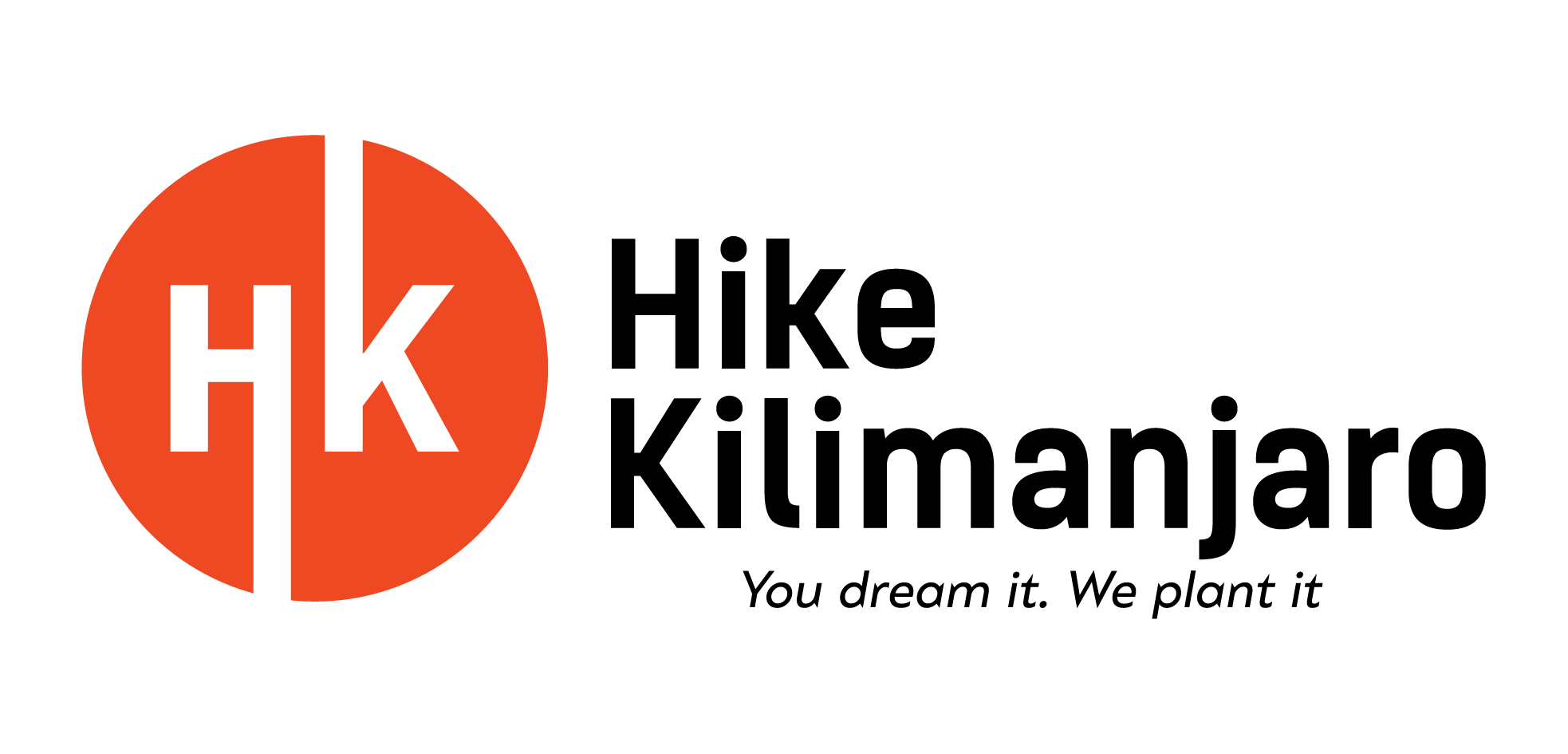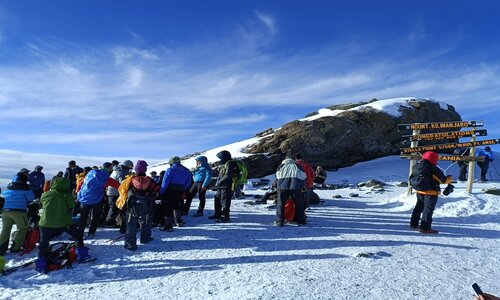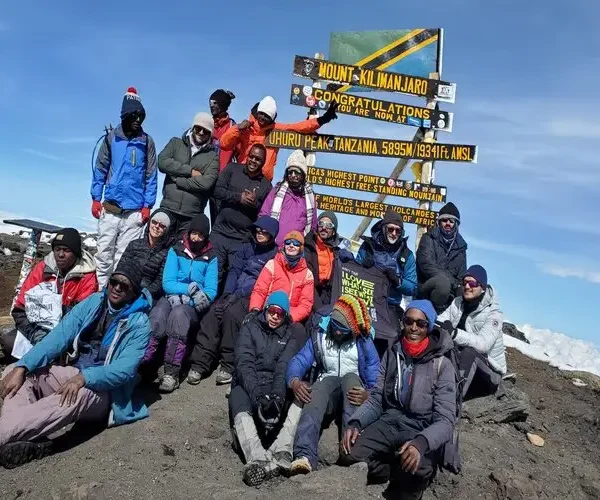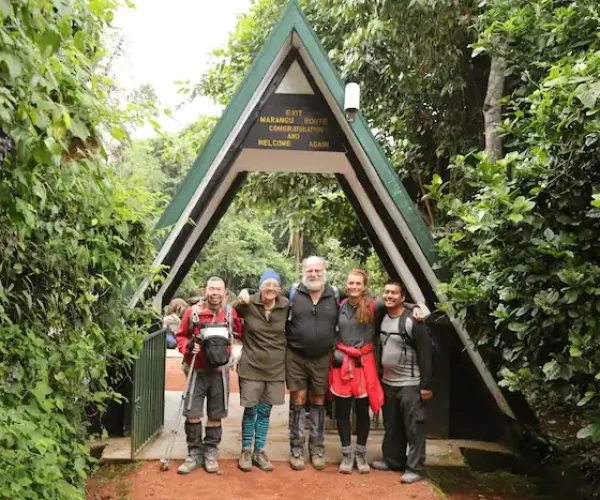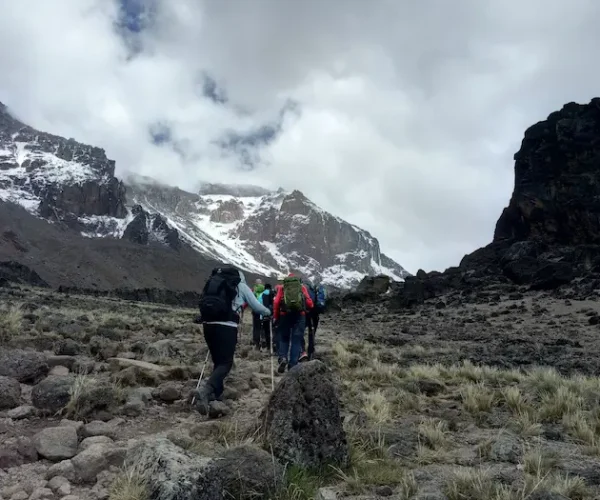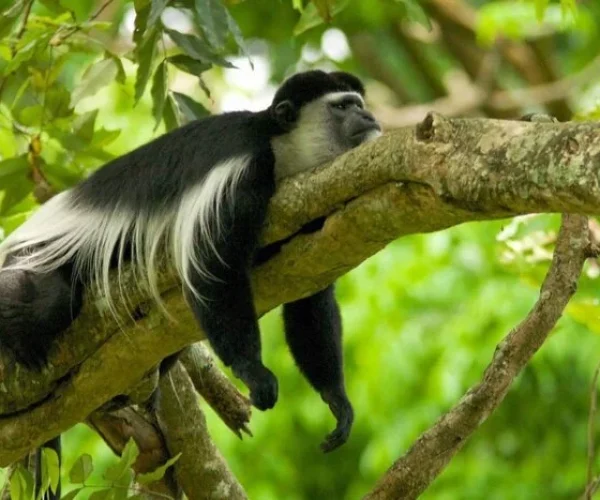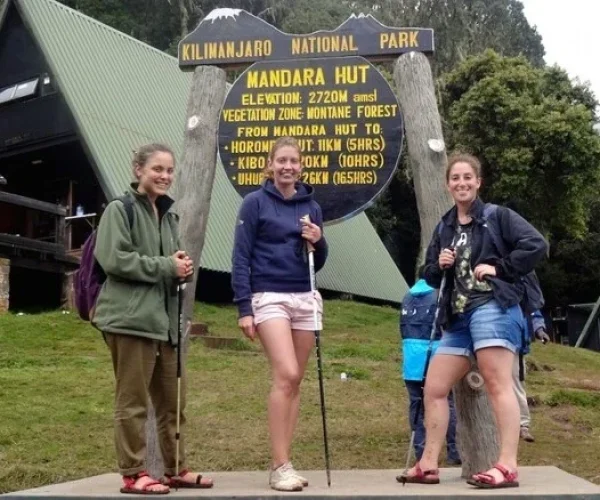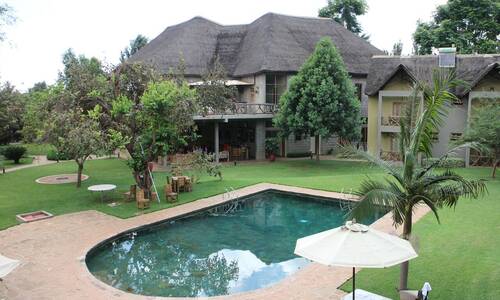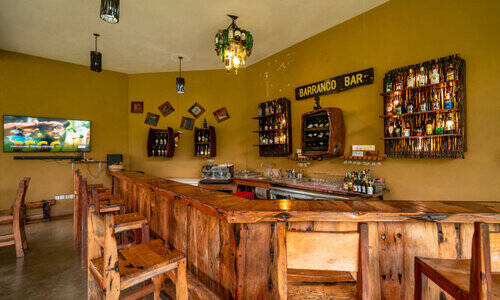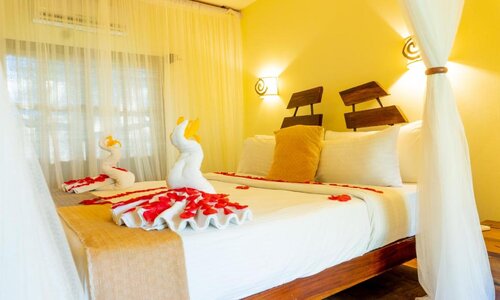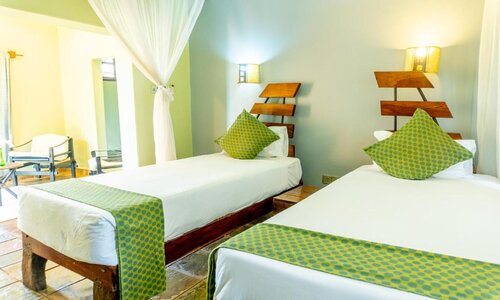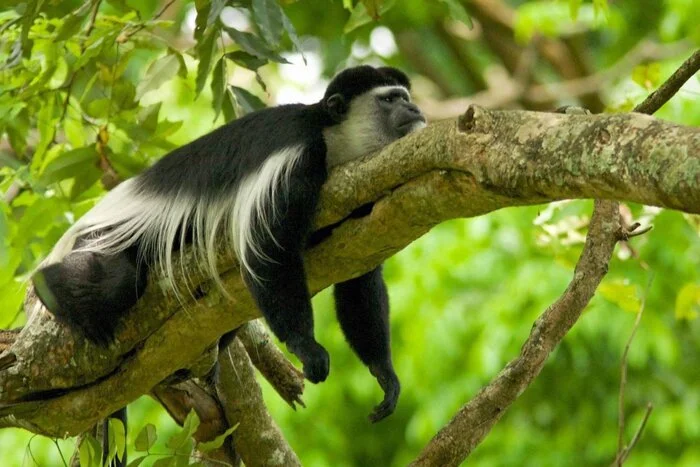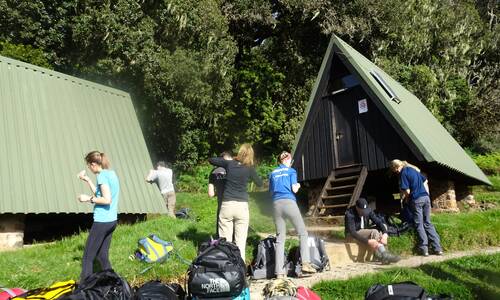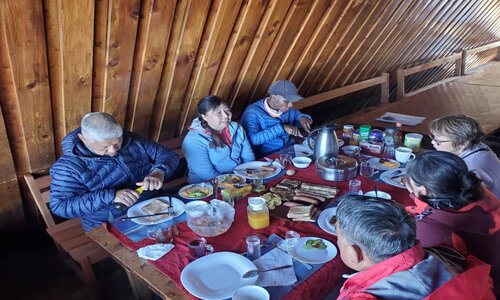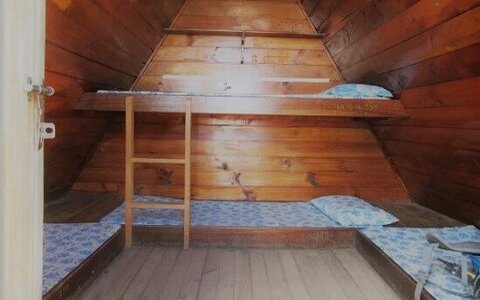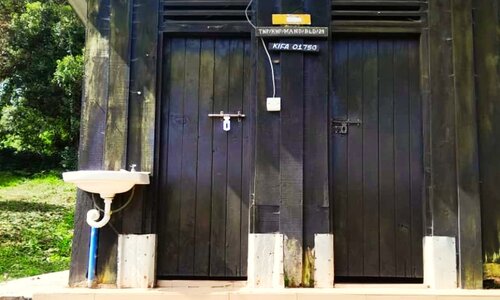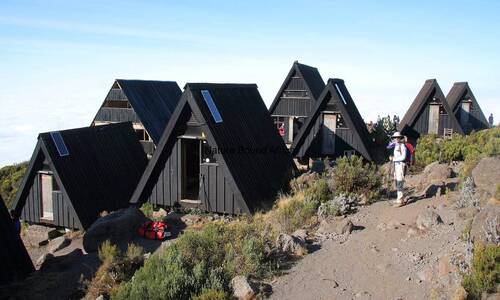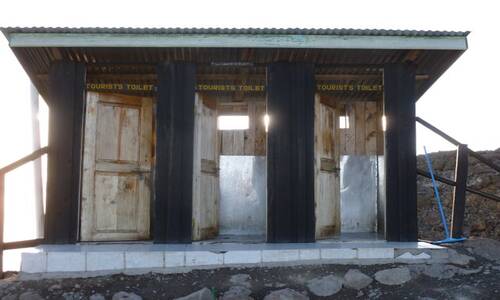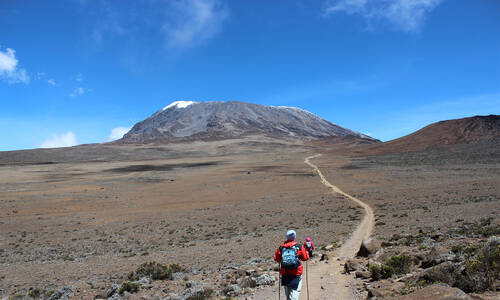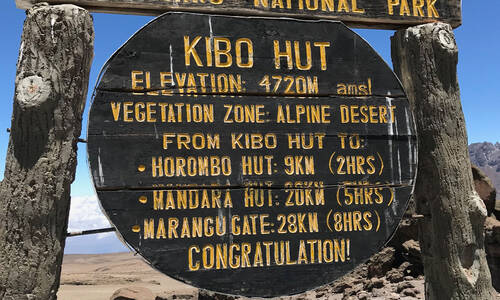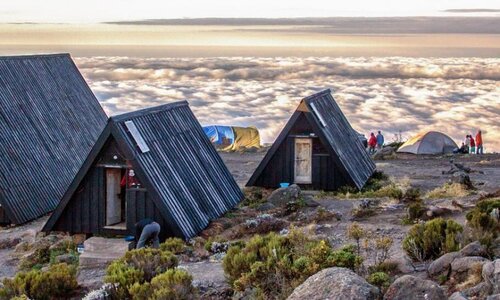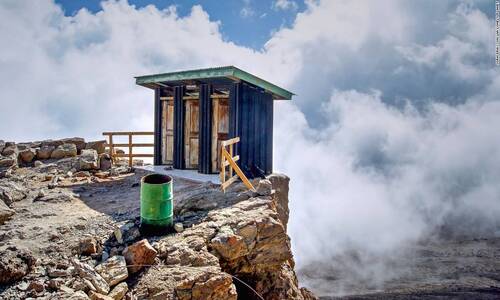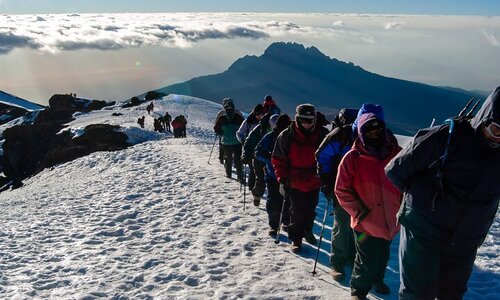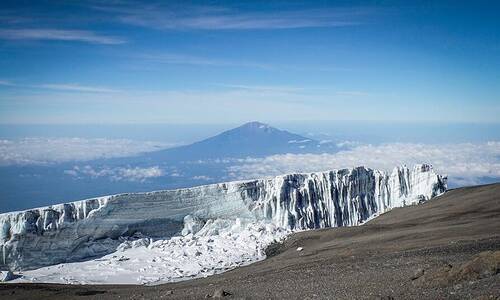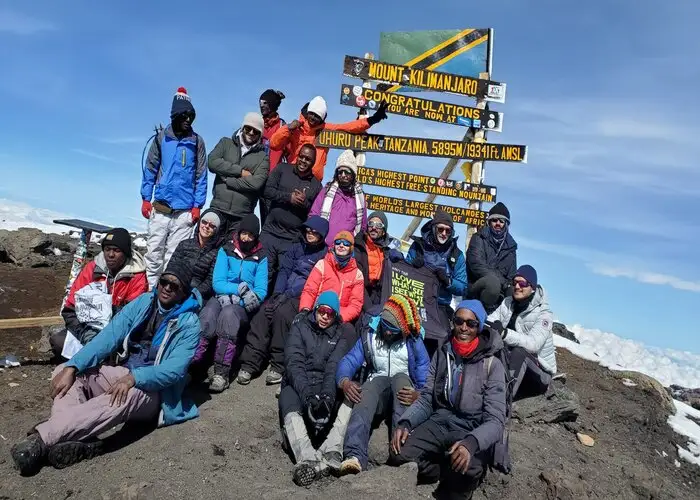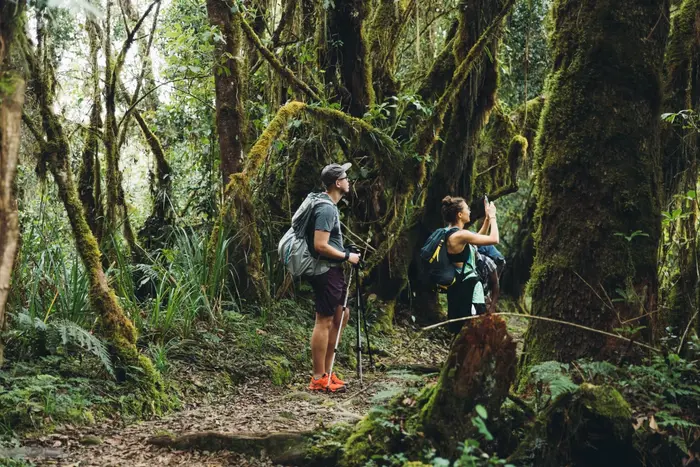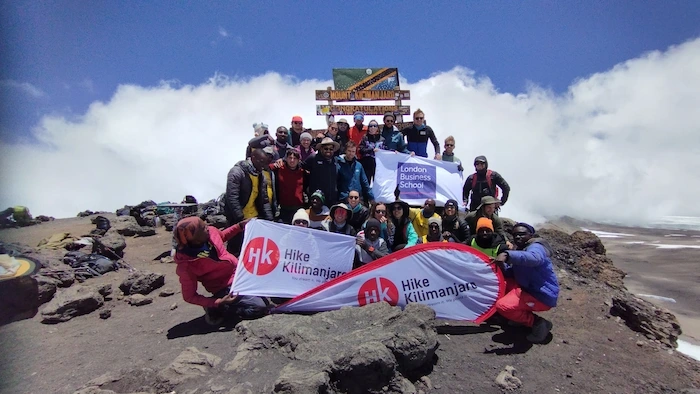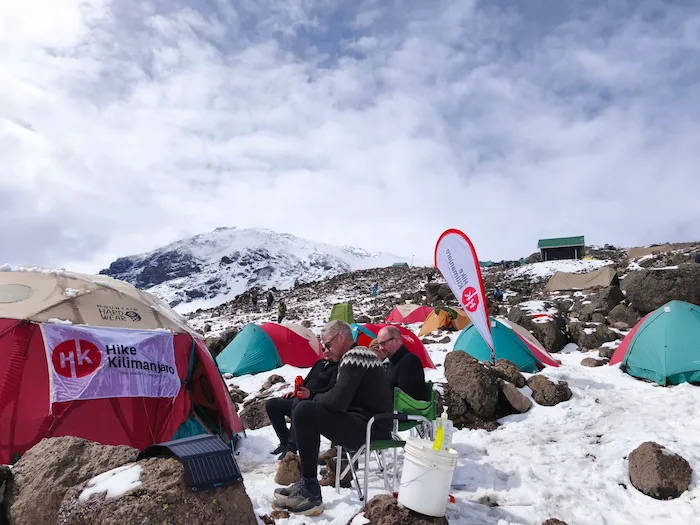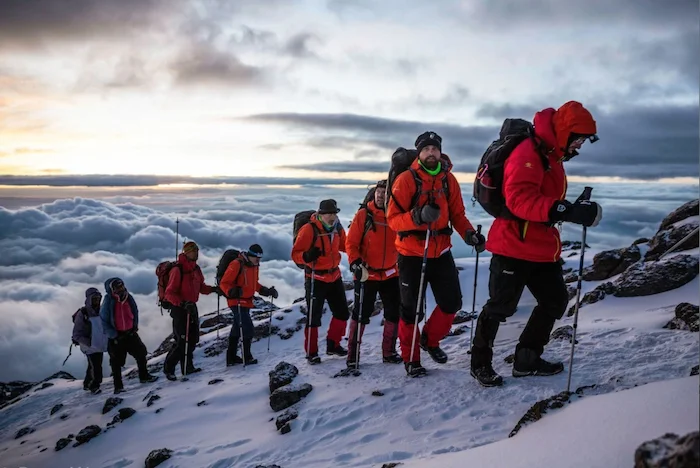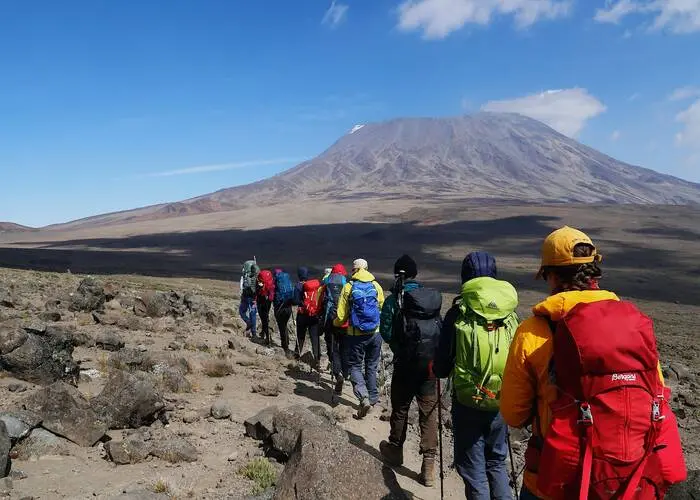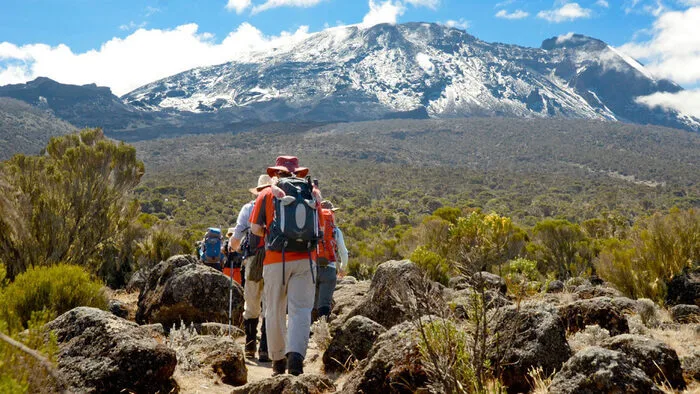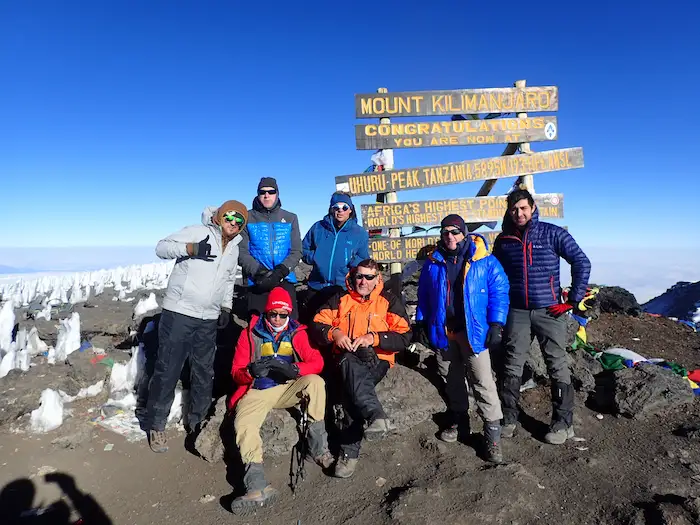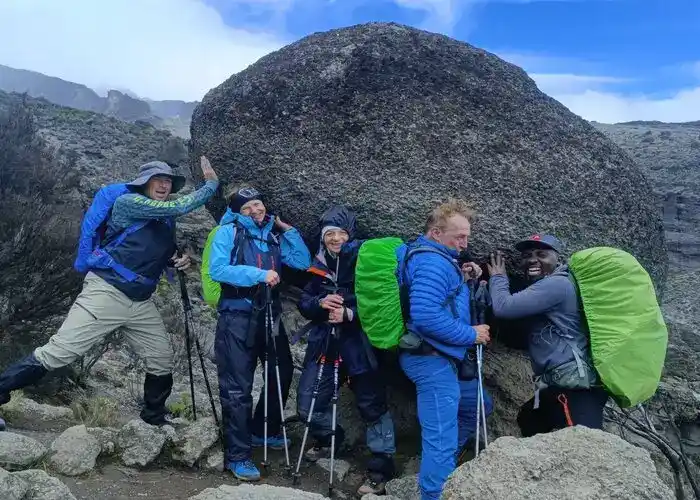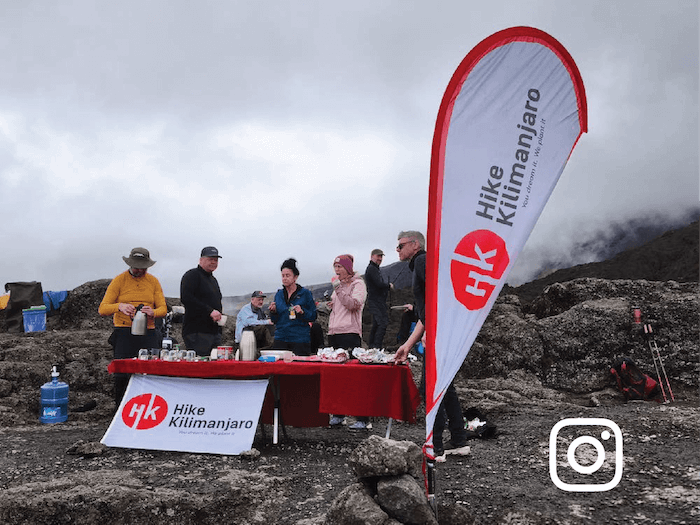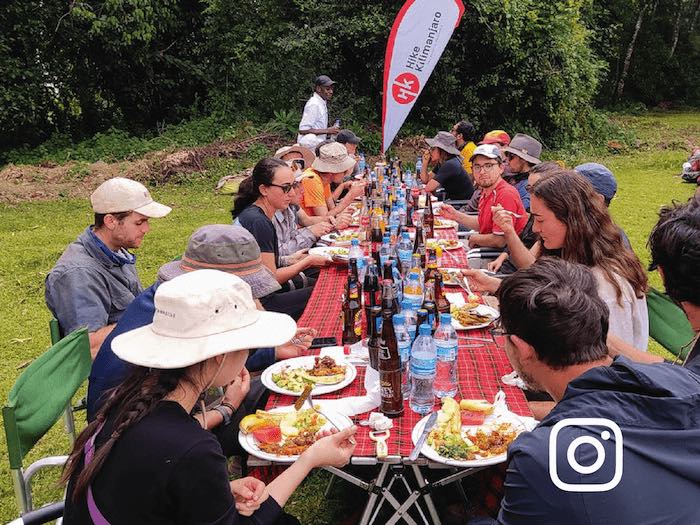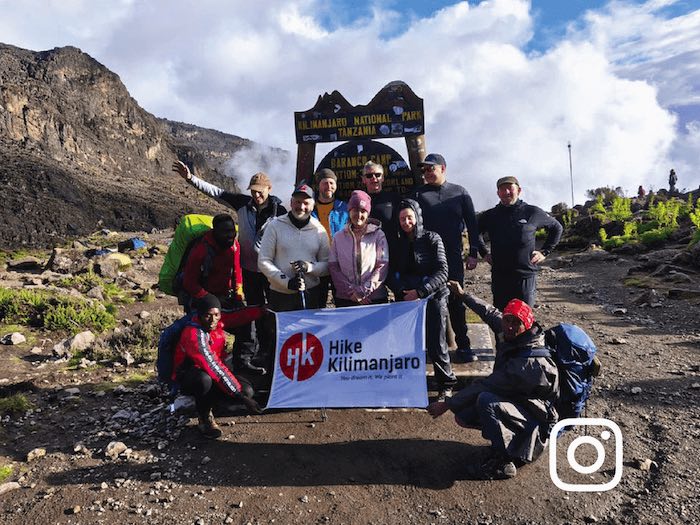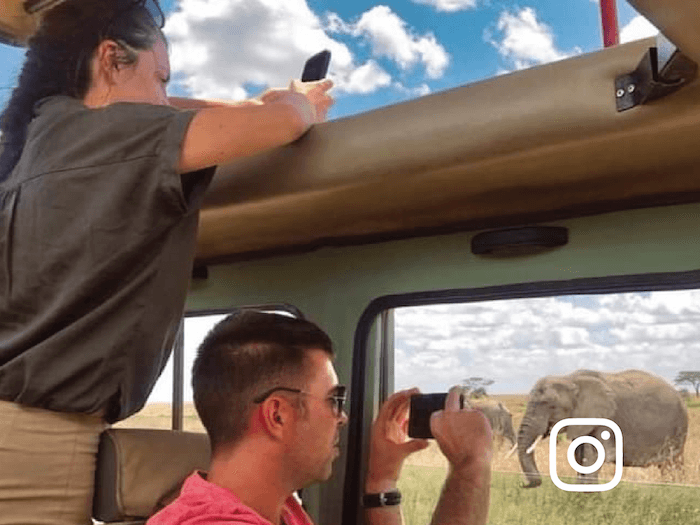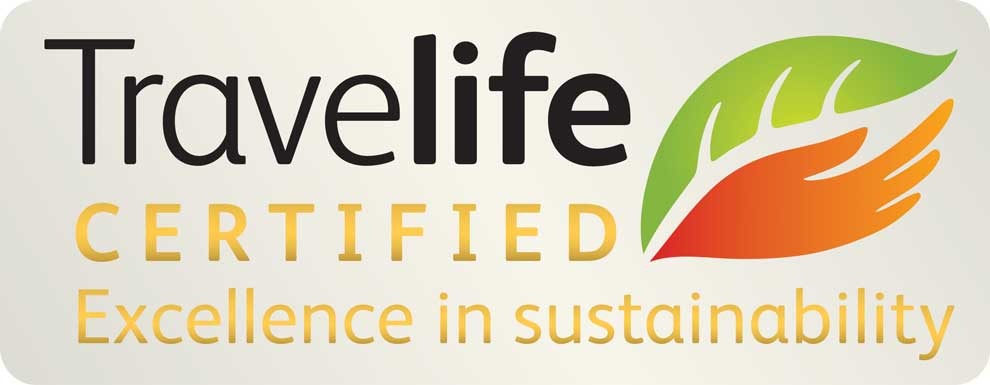Yes, you can hike Mount Meru first and then climb Mount Kilimanjaro via the Marangu Route, and it’s actually a great strategy for acclimatization. Climbing Mount Meru (4,566 m) before Kilimanjaro helps your body adjust to altitude, improving your chances of a successful Kilimanjaro summit. Since both mountains are near Arusha and Moshi, logistics are easy to manage, and many trekkers choose this combination for a more rewarding and safer high-altitude experience.
- Home
- »
- 5-Day Budget Kilimanjaro Trek – Marangu Route
5-Day Budget Kilimanjaro Trek – Marangu Route
Embark on a 5-Day Budget Kilimanjaro Trek on the Marangu Route, the most classic trail to Africa’s highest peak. This affordable package includes 2 nights hotel accommodation in Moshi (before and after the climb), professional guides, and a safe, comfortable trek to Uhuru Peak.
Country
Tanzania
Duration
7 Days
Difficulty
Challenging
Activity
Trekking / Hiking
Max. altitude
5,895 m(19,341 ft)
Best season
Jun-Oct, Dec-March
Accomodation
Hotel & Huts
All meals on Trek
Included
Start/End Point
Kilimanjaro Airport
Country
Tanzania
Duration
7 Days
Difficulty
Challenging
Activity
Trekking/Hiking
Max. altitude
5,895m/19,341 ft
Best season
Jun-Oct, Dec-March
Accomodation
Huts & Hotel
Meals
Included
Trip Highlights
- Experience the classic Kilimanjaro climb via the historic Marangu Route, also known as the “Coca-Cola Route.
- Enjoy comfortable overnight stays in mountain huts – the only route with built-in accommodation.
- Trek through scenic landscapes including lush rainforest, moorland, and high-altitude alpine desert.
- Witness breathtaking sunrise views from Gillman’s Point and Uhuru Peak (5,895 m), the highest point in Africa.
- Marvel at Kilimanjaro’s ancient glaciers and dramatic volcanic formations near the summit.
- Discover the natural beauty of Maundi Crater and its panoramic outlook toward Kenya.
- Learn about the traditions and lifestyle of the Chagga people, native to the Kilimanjaro region
- A moderate to challenging trek, ideal for climbers seeking a shorter route with built-in amenities.
5-Day Budget Kilimanjaro Trek – Marangu Route Overview
Experience Mount Kilimanjaro on a budget without compromising safety, comfort, or support. The 5-Day Marangu Route trek offers the most affordable way to reach Uhuru Peak, with overnight stays in mountain huts, reducing the need for camping gear. Known as the “Coca-Cola Route,” Marangu is the only trail with hut accommodations, making it a great choice for budget-conscious trekkers seeking shelter from the elements.
This itinerary is ideal for those with limited time or first-time high-altitude hikers looking for a shorter route to the summit. The path is well-maintained, with gradual ascents and scenic rainforest and moorland landscapes along the way. While the 5-day trek has a lower summit success rate due to limited acclimatization time, our expert guides at Hike Kilimanjaro ensure you’re well-supported every step of the way.
5-Day Budget Kilimanjaro Trek – Marangu Route Itinerary
Day 01: Arrival in Tanzania
Upon arrival at Kilimanjaro International Airport (JRO), you will be welcomed by a representative from Hike Kilimanjaro Ltd and transferred to Weruweru River lodge in Moshi or to a similar hotel. After check-in, you will have a full briefing with your guide, including a gear check to ensure you’re fully prepared for the trek.
- Overnight at Weruweru River Lodge
- Breakfast included
Note:
The pre-trip briefing will take place at our office if you arrive before 4:00 PM, and at your hotel if you arrive later in the evening. Please ensure you bring a copy of your passport and a readable copy of your travel insurance policy to the meeting. These documents are required for us to obtain your trekking permits and complete necessary documentation for the trek.
Please also note that hotel check-in is from midday (12:00 PM). If your flight arrives early in the morning, kindly let us know in advance. We can arrange a day-use room for you, or, if you prefer, we can organize some short activities to keep you engaged until your check-in time.
Day 2: Marangu Gate to Mandara Hut
After breakfast, we drive to Marangu Gate, located on the southeastern side of Kilimanjaro. Once registration formalities are complete, we begin our trek along a well-maintained forest trail. This section is rich in flora and fauna, with sightings of blue monkeys, black-and-white colobus monkeys, and a variety of birds. The path gradually ascends through dense vegetation before opening up to reach Mandara Hut, where you’ll spend your first night on the mountain.
- Hiking Time: 4–5 hours
- Distance: 8 km (5 miles)
- Elevation: 2,700 m (8,858 ft)
- Overnight at Mandara Hut
- Breakfast, Lunch and Dinner included
Day 3: Mandara Hut to Horombo Hut
Today’s trek begins with a short climb through the last stretch of forest before transitioning into open moorland. The trail is dotted with large lobelias and giant groundsel iconic high-altitude plants native to Kilimanjaro. As you ascend, views of Mawenzi Peak, Kilimanjaro’s second highest summit, begin to appear in the distance. You’ll reach Horombo Hut, where you’ll relax, hydrate, and enjoy the panoramic vistas
- Hiking Time: 6–8 hours
- Distance: 12 km (7.5 miles
- Ending Elevation: 3,720 m (12,205 ft)
- Overnight at Horombo Hut
- Breakfast, Lunch and Dinner included
Day 4: Horombo Hut to Kibo Hut
The route today leads through a high-altitude desert landscape. You’ll pass the famous “Last Water Point” and traverse the saddle a vast, open expanse between the Mawenzi and Kibo peaks. The air is thinner here, and the trail feels more remote and rugged. Upon reaching Kibo Hut, you’ll have an early dinner and head to bed in preparation for the summit attempt later that night.
- Hiking Time: 6–8 hours
- Distance: 10 km (6.2 miles)
- Ending Elevation: 4,703 m (15,430 ft)
- Overnight at Kibo Hut
- Breakfast, Lunch and Dinner included
Day 5: Summit Day – Kibo Hut to Uhuru Peak to Horombo Hut
Your summit push begins just after midnight. The trail to Gillman’s Point (5,685 m) is steep and demanding, with switchbacks zigzagging up a rocky slope under starlit skies. From Gillman’s, it’s another 1–2 hours to the summit Uhuru Peak, the highest point in Africa. Arriving at sunrise, you’ll stand on the Roof of Africa, surrounded by glaciers, volcanic craters, and endless sky.
After enjoying your achievement, descend carefully back to Kibo Hut for a short rest and meal before continuing further downhill to Horombo Hut, where you’ll spend the night.
- Hiking Time: 12–16 hours
- Total Distance: 21 km (13 miles)
- Ending Elevation: 3,720 m (12,205 ft)
- Uhuru Peak: 5,895 m (19,341 ft)
- Overnight at Horombo Hut
- Breakfast, Lunch and Dinner included
Day 6: Horombo Hut to Marangu Gate – Transfer to Moshi
On your final day, you’ll descend through the lush montane rainforest, surrounded by the rich sights and sounds of Kilimanjaro’s vibrant lower slopes. The trail can be muddy and slippery, especially after rainfall, so we recommend using trekking poles and stepping with care.
Upon arrival at Marangu Gate, you’ll receive your official Kilimanjaro summit certificate from the national park authorities a proud token of your achievement in reaching Uhuru Peak. A freshly prepared hot lunch will be served at the gate.
Your Hike Kilimanjaro driver will be ready to welcome you and transfer you back to Moshi. It’s the perfect moment to relax, reflect on your unforgettable journey, and celebrate your successful summit of Africa’s highest mountain.
- Hiking Time: 6–7 hours
- Distance: 20 km (12.4 miles)
- Elevation: 1,870 m (6,135 ft)
- Overnight at Weruweru River Lodge
- Breakfast, Lunch and Dinner included
Day 7: Departure Day
After breakfast, depending on your flight schedule, you will be transferred to Kilimanjaro International Airport (JRO) for your departure.
- Breakfast included
Note:
Check-out time at the hotel is 10:00 AM. If your flight is scheduled for the evening or night, you may book a day-use room to rest and freshen up before your departure. Please inform us in advance if you would like us to reserve a room for you.
Note
The Marangu Route, often referred to as the "Coca-Cola Route," is the most established and comfortable path to the summit of Mount Kilimanjaro.
It is the only route that offers permanent hut accommodation, making it a popular choice for trekkers who prefer not to camp. These mountain huts provide simple yet practical shelter, complete with beds and solar lighting offering a warm and dry refuge after each day of trekking.
Starting on the southeastern side of Kilimanjaro, the Marangu Route takes you through dense montane rainforest, rolling moorlands, and rocky alpine zones before reaching the icy summit at Uhuru Peak (5,895 m / 19,341 ft). While it follows a direct ascent and descent along the same trail, the addition of a full acclimatization day at Horombo Hut significantly increases your chances of summit success.
This route is ideal for trekkers looking for a more straightforward, less physically demanding trail without sacrificing the magic of Kilimanjaro’s breathtaking scenery. Along the way, you’ll enjoy spectacular views of Mawenzi Peak, pass through ancient volcanic landscapes, and gain insight into the mountain's ecological diversity.
With its historic reputation, comfortable sleeping arrangements, and consistent success rates, the Marangu Route is a great option for first-time climbers or those looking for a quieter, more traditional Kilimanjaro trekking experience.
Flight information
The best airport to fly into is Kilimanjaro International Airport (JRO). Located about 45 km from Moshi and 50 km from Arusha, it is the most convenient airport for climbers.
Hike Kilimanjaro Ltd can arrange airport transfers from Kilimanjaro International Airport to your hotel and back. Please note that transfers are available at an additional cost, just let us know your flight details in advance, and we’ll handle the rest.
Alternative Airports
If you cannot find a flight directly to Kilimanjaro International Airport, you may also consider flying to:
- Nairobi International Airport (NBO) – Kenya
- Julius Nyerere International Airport (DAR) – Dar es Salaam, Tanzania
From these airports, you can connect to Kilimanjaro by either:
- A connecting flight to Kilimanjaro International Airport (JRO)
- A shuttle bus or private transfer to Moshi or Arusha, where your trek begins
For convenience, Nairobi is closer to Kilimanjaro than Dar es Salaam, and often offers more international flight options at competitive prices.
International Flights to Kilimanjaro Airport (JRO)
Several major airlines offer direct flights to Kilimanjaro International Airport:
| Airline | Route |
|---|---|
| KLM | Amsterdam → Kilimanjaro |
| Condor | Frankfurt → Kilimanjaro |
| Turkish Airlines | Istanbul → Kilimanjaro |
| Kenya Airways | Nairobi → Kilimanjaro |
| Precision Air | Nairobi → Kilimanjaro |
| Qatar Airways | Doha → Kilimanjaro |
| Ethiopian Airlines | Addis Ababa → Kilimanjaro |
| RwandAir | Kigali → Kilimanjaro |
If direct flights are not available from your location, you can also book flights via Dar es Salaam or Nairobi, then connect to Kilimanjaro.
Domestic Flights within Tanzania
For flights within Tanzania, the following airlines operate regular domestic services:
- Precision Air
- Air Tanzania
- Fly540
- Regional Air
- ZanAir
- Coastal Aviation
- Air Excel
Bus Transfers
We can also arrange shuttle bus services between Nairobi, Arusha, and Moshi. These are available daily for an additional fee.
Sample Shuttle Schedule (subject to change):
| Route | Departure | Arrival |
|---|---|---|
| Nairobi → Arusha | 08:00 | 14:00 |
| Nairobi → Arusha | 14:00 | 18:30 |
| Nairobi → Moshi | 08:00 | 15:30 |
| Moshi → Nairobi | 06:00 | 14:00 |
| Arusha → Nairobi | 08:00 | 14:00 |
| Moshi → Nairobi | 10:30 | 18:30 |
| Arusha → Nairobi | 14:00 | 18:30 |
Private Transfers
For added comfort and flexibility, private transfers can also be arranged between:
- Nairobi ↔ Arusha / Moshi
- Dar es Salaam ↔ Arusha / Moshi
- Mombasa ↔ Arusha / Moshi
Private transfers are available at an extra cost. Contact us for current rates and arrangements.
Price For 5 Day Marangu Route Trek
Number of Pax
Price Per Person
2
USD 1,880 pp
3 to 5
USD 1,729 pp
6 to 10
USD 1,695 pp
10+
USD 1,550 pp
Inquire Now
Looking for personalized experience? We organize privately guided journey which is mainly designed to fit your taste and interest. Please fill out the form below to get started.
Price Includes
- Airport transfers (to and from Kilimanjaro International Airport)
- Two nights hotel accommodation in Arusha (one night before and one night after the trek, with breakfast included)
- All park entry fees, hut fees, and rescue fees
- Professional, experienced mountain guides (Wilderness First Responder certified)
- Assistant guides, cooks, and porters to support you throughout the trek
- Emergency oxygen cylinder carried on the trek for safety purposes
- Pulse oximeter monitoring (daily health checks)
- All meals during the trek (breakfast, lunch, dinner), freshly prepared by our mountain chef
- Drinking water (Boiled & filtered)
- Summit certificate from Kilimanjaro National Park
- Fair wages for guides, cooks, and porters (following Kilimanjaro Porter Assistance Project guidelines)
- Transfer to and from the Kilimanjaro National Park gate
- Pre-climb briefing with your guide
Price Excludes
- International airfare to and from Tanzania
- Tanzania entry visa fees
- Travel insurance (mandatory and must cover high-altitude trekking and emergency evacuation)
- Tips for guides, porters, and cooks (recommended guidelines will be provided)
- Personal trekking gear (sleeping bags, trekking poles, etc.)
- Lunch and dinner in Arusha (except breakfast at the hotel)
- Additional hotel nights beyond those included in the itinerary (if required)
- Personal expenses (such as souvenirs, snacks, and laundry)
- Beverages other than those served with meals (soft drinks, alcohol)
- Optional activities or excursions before or after your trek
- Half-day room use if your departure flight is late and you wish to rest after check-out (available at extra cost)
- Portable power banks or solar chargers for electronic devices
Packing List for 5-Day Budget Kilimanjaro Trek – Marangu Route
To ensure a safe and comfortable trek with Hike Kilimanjaro Ltd, we recommend the following essential gear and equipment. Proper preparation is key to enjoying your climb and reaching the summit successfully.
Head & Neck Gear (Essential Accessories)
- Sun hat or cap (wide-brimmed or with neck cover is ideal)
- Knitted hat / Beanie (for warmth at higher altitudes)
- Scarf / Neck Gaiter / Buff (highly recommended for dust, wind, and cold)
- Headlamp (with extra batteries – essential for summit night)
- Sunglasses (with high UV protection and polarized lenses)
Torso (Upper Body Clothing)
- Technical fabric base layers (1 light for warmer days, 1 heavier for cold conditions; synthetic or merino wool preferred)
- Technical trekking shirts – 2 short-sleeve and 2 long-sleeve (breathable, moisture-wicking)
- Fleece jacket or pullover (for insulation during cool evenings and mornings)
- Insulated down or synthetic jacket (optional but highly recommended for extra warmth on summit night)
- Waterproof and windproof shell jacket (with hood; Gore-Tex or similar material to protect against rain and wind)
Lower Body (Legwear)
- Technical fabric base layer leggings (lightweight for warmer days, heavier thermal for cold nights)
- Hiking pants (2 pairs; lightweight, quick-dry, and breathable)
- Comfortable pants (for relaxing at camp and sleeping, such as joggers or fleece pants)
- Waterproof and windproof shell pants (to wear over hiking pants in rain or high winds; essential)
- Hiking shorts (optional – for the lower, warmer sections of the mountain)
Hands
- Lightweight liner gloves (wool or technical fabric; good for mild conditions and as a base layer)
- Insulated outer gloves or mittens (waterproof and windproof; essential for summit night and cold weather)
Feet
- Warm socks (wool or technical fabric; essential for cold nights and summit day)
- Hiking socks (several pairs; moisture-wicking and breathable)
- Liner socks (optional, such as silk or synthetic, to help prevent blisters)
- Trekking/Hiking boots (waterproof, insulated, and well broken-in)
- Ice Cleats / Micro Spikes (recommended from December to February) – helpful for icy or slippery conditions on the higher slopes.
- Casual shoes (for wearing around camp after trekking, such as sneakers or slip-ons)
- Gaiters (lightweight for dust or heavy-duty for snow during the wet season)
- Tip: Bring enough socks to change regularly, keeping your feet dry and blister-free.
First Aid Kits and Personal Medications
- Note: Our guides carry a basic first aid kit and essential medications during the trek. However, we highly recommend bringing your own personal kit with any specific items you may need.)
- Sunscreen (SPF 30 or higher; essential for high-altitude sun exposure)
- Lip balm (with SPF protection)
- Antiseptic ointment (for cuts, blisters, or minor wounds)
- Cough syrup (dry air and cold temperatures can irritate the throat)
- Mosquito repellent (for lower elevations or time spent before/after the trek)
- Tip: Always consult with your doctor before traveling to ensure you have the right medications for high-altitude trekking.
Other Essentials
- Passport (valid, with necessary visas)
- Reusable water bottles (2 bottles of 1L each are recommended)
- Hydration bladder (like a CamelBak, 2–3L capacity, useful for summit night)
- Water purification tablets or UV water purifier (optional, as filtered water is provided, but good as backup)
- Toiletry kit (toothbrush, toothpaste, wet wipes, hand sanitizer, etc.)
- Quick-dry towel (small or medium size)
- High-protein snacks (such as energy bars, trail mix, or nuts).
- Waterproof/dry bags (to protect important documents, electronics, and money)
- Airline tickets (Please leave a copy of your flight details with our office for coordination and in case of schedule changes.)
- Tip: Always keep important documents in sealed, waterproof pouches to protect them from rain and moisture.
Optional
Once you are in Tanzania, you have the option to rent all necessary gear from us or purchase supplies and hiking equipment if you have spare time before your trek. Our guide will be happy to assist you in finding and buying any required gear.
Important Luggage and Gear Information
Each participant is allowed one duffel bag, which should weigh between 10 to 14 kg.
This bag will be carried by our porters throughout the trek.
You will also need to carry your own daypack (with a waterproof cover) for daily essentials such as cash, important documents, water bottle or hydration bladder, camera, snacks, energy bars, toiletries, sunscreen, extra clothing layers, and other personal items.
Any extra luggage (non-trekking items) can be safely stored at your hotel in Arusha or Moshi during the trek.
Gear Rentals:
Down jacket with hood (mandatory above 4,000m): Available to rent from Hike Kilimanjaro Ltd. for USD 30
Sleeping bag (suitable for high-altitude cold conditions): Available to rent from Hike Kilimanjaro Ltd. for USD 30
Note: All essential mountain gear is available for rent.
Marangu Route Map
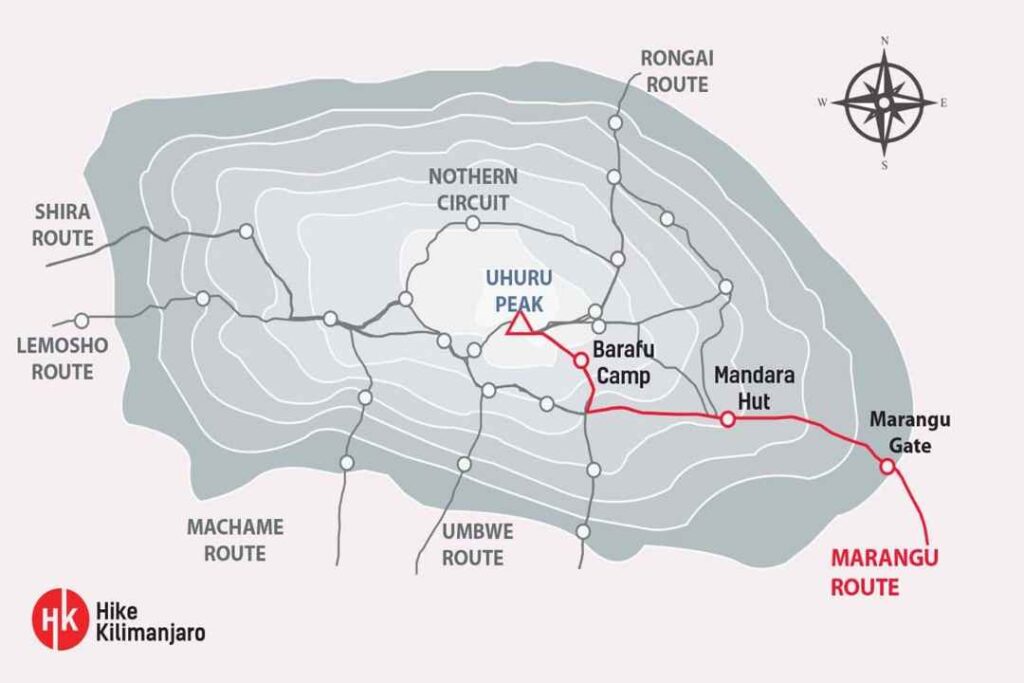
FAQs for 5-Day Budget Kilimanjaro Trek – Marangu Route
General
Why trek with Hike Kilimanjaro ?
Hike Kilimanjaro is proudly recognized as one of the top trekking companies in Tanzania. We have earned a reputation for leading successful treks with expert guides and a dedicated team that takes care of all your travel needs.
As a certified sustainable travel company, we are committed to responsible tourism and making a positive impact on the local community. Our efforts include supporting local initiatives, such as contributing to the construction of shelters and promoting access to education.
Join us for an adventure that not only allows you to experience the beauty of Tanzania but also supports the communities that make it all possible.
Is Tanzania open to travellers following the Covid-19 pandemic?
Tanzania is fully open to travelers, with no entry restrictions currently in place. Visitors can obtain a visa on arrival at international airports or land border crossings, including those coming from neighboring countries like Kenya and others.
Whether you're arriving by air or land, you’ll find a smooth and welcoming process to start your adventure in Tanzania.
What are the conditions to travel to Tanzania post Covid-19?
Traveling to Tanzania is now hassle-free. There is no requirement for a vaccination certificate or a negative PCR test to enter the country. However, it’s important to check with your airline and any transit countries for specific requirements, as regulations may vary.
Enjoy a smooth journey to Tanzania and get ready for your adventure!
What additional documents do i need?
To complete your booking and preparation, please provide the following documents to our office staff:
- A copy of a passport-sized photo
- A copy of your international flight ticket
- A copy of your travel insurance
- These documents help us ensure a smooth process for your trek and make the necessary arrangements for your adventure.
What should I know about booking my flight to/from Tanzania? Do I need to plan extra days in case of delays?
When booking your flight to Tanzania, we recommend adding a day or two before your intended trek start date. This extra time will help you accommodate any flight delays or cancellations and also give you time to purchase any last-minute clothing, equipment, or gear needed for your trek.
Please note that Hike Kilimanjaro Company is not responsible for any inconveniences, missed international flights, or additional costs resulting from unforeseen events such as airport changes, flight delays, or cancellations. We advise travelers to plan accordingly and allow extra time to ensure a smooth and stress-free journey.
Is hiring a guide necessary even if I have trekking experience?
According to Mount Kilimanjaro trekking regulations, it is mandatory to hike with a registered local guide, regardless of your previous mountain experience. A guide is essential not only for navigation but also for providing support, making informed decisions, and adjusting plans in case of unforeseen challenges during the trek.
At Hike Kilimanjaro Company, our trekking guides are highly trained professionals with extensive experience. Many of our past trekkers have shared that their guide played a key role in making their Kilimanjaro adventure both enjoyable and safe, and ultimately contributed to their successful summit.
Which languages do the guides speak when leading the travelers?
At Hike Kilimanjaro Company, our guides primarily speak English and Swahili, ensuring effective communication throughout your trek. Additionally, we have guides who speaks other languages such as German, French, Spanish, and more, available upon special request.
Please let us know your preferred language in advance, and Hike Kilimanjaro will make the necessary arrangements to ensure a smooth and comfortable experience during your climb.
Kilimanjaro Marangu Route Weather and Temperature
What is the best time to trek Marangu Route?
The Best Time to Trek the Marangu Route on Mount Kilimanjaro
The ideal time to trek the Lemosho Route is during the dry seasons, from January to early March and from mid-June to October. These months offer the most stable weather conditions, with clear skies, low chances of rain, and excellent trail conditions, all of which contribute to a safer and more enjoyable climbing experience.
The January to March period tends to be quieter on the mountain, with slightly warmer temperatures. In contrast, June to October is the most popular time to climb, known for its consistently dry climate and breathtaking views.
It's best to avoid the rainy seasons, April, May, and November, as heavy rainfall can make trails muddy and slippery, while also reducing visibility at higher elevations.
What kind of weather and temperature can I expect while trekking?
While trekking the Marangu Route, you'll experience a wide range of weather conditions and temperatures as you move through different climate zones. Here's what to expect:
Base to Rainforest Zone (800m - 3,000m):
- Weather: Warm and humid, especially during the day.
- Temperature: 15°C to 25°C (59°F to 77°F)
Heath and Moorland Zone (3,000m - 4,000m):
- Weather: Cooler, drier, with occasional mist or rain.
- Temperature: 5°C to 15°C (41°F to 59°F)
Alpine Desert Zone (4,000m - 5,000m):
- Weather: Dry and windy, intense sun during the day, cold at night.
- Temperature: -5°C to 10°C (23°F to 50°F)
Arctic Zone / Summit (Above 5,000m):
- Weather: Very cold, high winds, possibly snow or ice.
- Temperature: As low as -15°C to -20°C (5°F to -4°F) or colder, especially at night and early morning during the summit push.
Tip: It's essential to pack layers, including a warm jacket, thermal wear, and rain gear to adapt to these changing conditions.
What is the temperature rating of the sleeping bag that you lend to trekkers?
The sleeping bags provided by Hike Kilimanjaro for trekkers are rated to handle temperatures as low as -10°C (14°F). These sleeping bags are designed to keep you warm and comfortable during your trek, even in the colder conditions at higher altitudes on Mount Kilimanjaro.
Arrival and Visas
Is it possible to obtain a visa for Tanzania upon arrival at the airport?
Yes, travelers can obtain a visa on arrival at major airports in Tanzania, including Kilimanjaro, Dar es Salaam, and Zanzibar. You will need:
- A valid passport (with at least 6 months' validity)
- Proof of onward travel
- Sufficient funds for your stay
The visa fee is typically $50 (or $100 for U.S. citizens), payable in cash (USD).
To avoid any delays, Hike Kilimanjaro recommends applying for an e-Visa in advance through the official portal: https://visa.immigration.go.tz.
Always check the current visa requirements before travel, as policies may change.
Who will come to pick me up at the airport upon my arrival?
When you arrive, a member of the Hike Kilimanjaro team will be waiting for you outside the airport terminal holding a signboard with both our company name and your travel group name. You will then be escorted to your hotel in a private, comfortable tourist vehicle for your convenience and comfort.
How long shoul i expect the visa process and baggage claim to take upon arrival at the airport?
At Kilimanjaro International Airport, the process of obtaining a visa and collecting your baggage generally takes 30 minutes to 1 hour. However, this duration may vary depending on factors such as the time of day, the number of arriving flights, and passenger volume. We recommend allowing some extra time for these processes to ensure a smooth arrival.
Can I buy a SIM card at the airport in Tanzania?
Yes, SIM cards are available for purchase at the airport from local telecom providers such as Vodacom, Airtel, and Tigo. We recommend Vodacom for its extensive nationwide coverage.
SIM card counters are open from morning until evening. If your flight arrives late and the counters are closed, don’t worry—our driver can take you to a Vodacom shop the following morning before your trip begins.
You can purchase a SIM card in the arrivals area after collecting your baggage. Please remember to bring a passport-sized photo and a copy of your passport, as these are required for registration.
Where can I exchange my money upon arrival in Tanzania?
Upon arrival at Kilimanjaro International Airport, you can exchange your currency at one of the money exchange counters in the arrivals area. Alternatively, Hike Kilimanjaro can guide you to authorized exchange centers near your hotel, which are typically open during the day for your convenience.
Kilimanjaro Marangu Route Trek Cost
Can I use a credit card in Tanzania?
Yes, you can use credit cards in Tanzania. Visa, Mastercard, and American Express are widely accepted at most hotels, restaurants, and shops. However, please be aware that using a credit card may incur additional fees to cover transaction charges. Hike Kilimanjaro recommends carrying some cash for smaller purchases or in areas where cards might not be accepted.
Is it possible to use credit cards in the places I visit during the trek?
While trekking in the mountain regions, Tanzanian Shillings (TZS) are preferred over credit cards. Hike Kilimanjaro strongly recommends exchanging your cash into Tanzanian Shillings before starting your trek.
You can exchange currency at the airport, local banks, or use ATMs on the way to the national parks. For the best exchange rates, it's ideal to exchange your money in Arusha or Moshi town before your trek begins.
Is it possible to reserve a trip now and pay a deposit later or do I have to pay a deposit at booking?reservation?
To confirm your booking with Hike Kilimanjaro, a 30% deposit is required. The remaining balance can be paid up to 4 weeks before your trip or upon your arrival at Kilimanjaro International Airport.
We accept US Dollars (cash) and credit cards (Visa, MasterCard, and American Express) in Tanzania. Please note that a 3% transaction fee applies to all credit card payments.
How do I pay the remaining balance of my trip upon arrival in Tanzania? US Dollars cash or credit card?
The full payment for your trip with Hike Kilimanjaro must be made no later than four weeks before your trip start date.
You can complete your payment using US Dollars (USD) via bank transfer or credit card (Visa, MasterCard, or American Express). Please note that a 3% transaction fee applies to all credit card payments. For this reason, we recommend using bank transfer or USD cash if possible.
If you choose to pay in USD cash, please ensure the bills are larger denominations (preferably $50 or $100), issued in 2009 or later, and in good condition—no torn, worn, or crumpled notes, as Tanzanian banks do not accept them.
How are the ATM and money exchange facilities in Tanzania?
There are ATM and money exchange facilities almost every place, where you will be staying in Tanzania. So, you can easily use your cards to cash out limited sum of money to which a minimum charge is deducted by the ATM facility itself. You can easily exchange your foreign currencies in currency exchange centers for an exact rate.
Who Can Trek?
Do I need a prior trekking experience?
No prior trekking experience is required to climb Mount Kilimanjaro. Many of our clients at Hike Kilimanjaro company are first-time trekkers, and with proper preparation and guidance, they reach the summit successfully.
That said, being physically prepared is essential. While Kilimanjaro is a non-technical climb (no ropes or climbing gear needed), it is a multi-day high-altitude trek. The better your fitness level, hiking stamina, and mental resilience, the more enjoyable and successful your experience will be.
Why You Don’t Need Experience:
- The trek is fully guided with professional support
- Porters carry your gear, only a daypack is needed
- The pace is slow and steady ("pole pole") to help with acclimatization
- Training and preparation can more than make up for a lack of trekking background
Are there any age restrictions for joining Kilimanjaro Marangu Route Trek Packages?
At Hike Kilimanjaro company, we do not have strict age restrictions for joining our trekking packages. As long as participants are physically healthy, mentally prepared, and willing, we warmly welcome adventurers of all ages to join this unforgettable journey.
We’ve proudly guided families with children as young as 10 years old, as well as seasoned trekkers in their late 70s. With the right mindset, preparation, and support, age is never a barrier to reaching new heights on Kilimanjaro.
Is trekking to Mount Kilimanjaro safe for solo female travelers?
Yes, trekking to Mount Kilimanjaro is safe for solo female travelers. Tanzania is generally regarded as a safe destination for female visitors traveling alone. It is entirely safe for a solo woman to trek with Hike Kilimanjaro on any of our treks. We prioritize safety and provide professional guides to ensure a secure and enjoyable experience throughout your journey.
Physical Fitness
How difficult is Marangu route trek?
The Marangu Route is generally considered moderate in difficulty compared to other Kilimanjaro routes, but it should not be underestimated.
Here’s a breakdown:
Difficulty Level: Moderate
- Trail Condition: Well-defined paths with gradual inclines make it physically less demanding day-to-day.
- Altitude Challenge: The main difficulty lies in its shorter acclimatization profile, since the ascent and descent use the same route. However, including a 6-day itinerary with an extra acclimatization day at Horombo Hut significantly improves success rates.
- Accommodation Advantage: Overnight stays in mountain huts (instead of tents) provide shelter from the cold and rain, making the trek more manageable, especially for those new to high-altitude hiking.
Ideal for:
- First-time trekkers
- Hikers who prefer more comfort (hut lodging)
- Those looking for a direct route with less daily elevation gain
How quickly do you walk on the trail?
On Mount Kilimanjaro, the pace is intentionally slow and steady—often referred to as "pole pole," a Swahili phrase meaning "slowly, slowly." This approach is crucial for successful altitude acclimatization and reducing the risk of altitude sickness.
With the Hike Kilimanjaro company, you can expect to walk at a relaxed pace of about 3–5 kilometers (2–3 miles) per hour, depending on the terrain, elevation, and group dynamics. Daily trekking times typically range from 4 to 8 hours, with longer summit day treks lasting up to 12–14 hours.
Our experienced guides set a pace that ensures everyone remains comfortable, well-rested, and safe throughout the journey. Frequent breaks are included to hydrate, eat, and enjoy the stunning landscapes along the way.
What kind of physical training is necessary for trek preparation?
Preparing for a Mount Kilimanjaro trek, especially with the Hike Kilimanjaro company, requires a good level of physical fitness, but you don’t need to be an elite athlete. The key is building endurance, strength, and mental stamina to handle long hiking days and high altitudes.
Recommended Training for Kilimanjaro Trekking:
1. Cardiovascular Training (3-4 times per week)
Engage in activities like hiking, jogging, cycling, or swimming to build heart and lung capacity. Aim for sessions lasting 45-60 minutes to improve overall stamina.
2. Hiking Practice
Take regular hikes on varied terrain with a loaded backpack (10-12 kg) to simulate real trail conditions. Gradually increase distance and elevation gain over time.
3. Strength Training (2–3 times per week)
Focus on legs, core, and lower back. Exercises like squats, lunges, step-ups, and planks help build the strength needed for uphill trekking and carrying a daypack.
4. Flexibility and Balance
Incorporate stretching, yoga, or Pilates to improve mobility and reduce the risk of injury on the mountain.
5. Altitude Simulation (optional but helpful)
If available, altitude training masks or high-altitude gyms can help your body adapt to reduced oxygen levels.
What are the physical standards that I need for the trek?
Climbing Mount Kilimanjaro doesn’t require technical climbing skills, but it does demand a good level of physical fitness and mental determination. With the support of the Hike Kilimanjaro company, even first-time trekkers can successfully reach the summit with the right preparation.
Minimum Physical Standards for the Trek:
1. Endurance:
You should be able to hike for 5–8 hours a day (with breaks), and 12+ hours on summit night. This requires strong cardiovascular fitness and stamina.
2. Strength:
Leg and core strength are essential for handling uneven trails, long ascents, and descents while carrying a daypack (5–7 kg). Exercises like squats, lunges, and step-ups can help prepare.
3. Altitude Tolerance:
While no one knows how their body will respond to high altitude until they’re there, being physically fit improves your ability to acclimatize. Training at higher elevations or using simulated altitude tools can help.
4. Stability and Balance:
You should be comfortable walking on rough, rocky terrain and navigating steep sections with trekking poles if needed.
5. Mental Resilience:
Equally important as physical strength is mental toughness. The trek can be physically and emotionally demanding, especially on summit night, so staying positive and determined is key.
Trek Preparation and Packing
What is the weight limit for the Tanzanian local flights?
Baggage allowances for local flights in Tanzania vary depending on the airline and type of aircraft. Here’s what travelers should know when flying domestically, especially to or from safari destinations:
Major Airlines (e.g., Air Tanzania):
- Checked Baggage (Economy Class): Up to 23 kg per passenger
- Checked Baggage (Business Class): Up to 30 kg per passenger
- Hand Luggage: Up to 7 kg per passenger
Regional Safari Airlines (e.g., Coastal Aviation, Auric Air, Safari Air Link):
- Total Baggage Allowance: 15 kg to 20 kg per passenger, including hand luggage
- Bag Type: Soft-sided duffel bags are strongly recommended due to limited space on smaller aircraft
Additional Notes:
- Exceeding the baggage limit may result in extra charges and is subject to space availability.
- If you expect to carry more, it's best to arrange extra baggage allowance in advance with the airline.
To ensure a smooth journey, we advise keeping your luggage light, soft-sided, and within the stated limits, especially if you're connecting to remote areas or national parks by light aircraft.
What are the procedures after I make my deposit?
After you make your deposit, a team member from Hike Kilimanjaro company will contact you via email to gather a few important details. We will kindly request:
- A copy of your passport photo page
- Your arrival and departure flight information
Additionally, we’ll provide you with detailed trip information to help you prepare for your adventure. Our goal is to ensure everything is arranged smoothly for a safe and unforgettable experience on Kilimanjaro.
What sort of insurance do I need? How can I obtain a policy?
For trekking Mount Kilimanjaro, you must have travel insurance that specifically covers:
- High-altitude trekking up to at least 6,000 meters (Kilimanjaro's summit is 5,895 meters)
- Emergency medical expenses and evacuation, including helicopter rescue
- Trip cancellation, interruption, or delay
- Loss or theft of personal belongings and gear
- Repatriation in case of serious illness or injury
What are the necessary items that I should pack for this trek?
Packing the right gear is crucial for a successful and comfortable trek. At Hike Kilimanjaro company, we provide tents, sleeping mats, and cooking equipment, but you’ll need to bring your own clothing, personal gear, and essentials.
Essential Clothing:
- Base Layers: Moisture-wicking thermal tops and bottoms
- Insulating Layers: Fleece or down jacket for warmth
- Outer Shell: Waterproof and windproof jacket and pants
- Hiking Pants & Shirts: Lightweight, breathable, and quick-drying
- Warm Hat & Gloves: Insulated and waterproof gloves + beanie
- Sun Hat & Sunglasses: For protection from UV at high altitudes
- Gaiters: To keep debris and moisture out of boots
- Trekking Boots: Waterproof, well-broken-in, and supportive
- Camp Shoes: Lightweight shoes for evenings at camp
- Socks: Wool or synthetic hiking socks (multiple pairs)
Gear & Equipment:
- Daypack: 25–35L with rain cover
- Duffle Bag: For porters to carry (we provide one on request)
- Sleeping Bag: Rated to at least -10°C to -20°C
- Trekking Poles: Adjustable and shock-absorbing (optional but helpful)
- Headlamp: With extra batteries
- Water Bottles/Bladder: 2–3 liters capacity
- Dry Bags or Ziplocks: For keeping gear dry and organized
Personal Items:
- Toiletries: Toothbrush, toothpaste, biodegradable soap, wipes
- Sunscreen & Lip Balm: High SPF (30+)
- Medications: Personal prescriptions, altitude medication, painkillers, etc.
- First Aid Kit: Band-aids, blister care, antiseptic wipes
- Snacks: Energy bars, trail mix, or electrolyte drink powders
- Passport & Travel Insurance Details
- Camera or Phone: With extra batteries or power bank
Do you provide sleeping bags or down jackets for rent?
Yes, Hike Kilimanjaro provides sleeping bags and down jackets for rent at a cost of USD 30 each. Please let us know in advance, before your trek, if you would like to rent these items, and we will ensure they are provided for you. You can view the photos of the gear at this link
What are the weights of the sleeping bag and down jacket?
At Hike Kilimanjaro company, we provide high-quality rental gear suitable for mountain conditions. Here are the approximate weights of our most commonly rented items:
- Sleeping Bag: ~2.5 to 3 kg
(4-season, rated for temperatures as low as -20°C) - Down Jacket: ~1 to 1.5 kg
(Thick, insulated, and ideal for summit night)
These items are designed to offer maximum warmth with minimal bulk, keeping you comfortable during cold nights on Kilimanjaro. If you're renting from us, your porters will carry the sleeping bag in the duffel bag provided, you’ll only carry your daypack during the trek.
What type of bag will the porters carry?
At Hike Kilimanjaro company, our porters will carry your main duffel bag throughout the trek. We recommend using a soft-sided, waterproof duffel bag with a maximum weight of 15 kg (33 lbs) when fully packed.
Bag Guidelines:
- Type: Soft duffel bag (no hard suitcases or wheeled bags)
- Size: Around 80–90 liters
- Weight Limit: 15 kg maximum (enforced for porter welfare)
Your duffel will be packed and transported by our porters each day. You will only carry a small daypack (25–35 liters) with your daily essentials like water, snacks, a rain jacket, camera, and sunscreen
What type of daypack should I bring?
For your Kilimanjaro trek with Hike Kilimanjaro company, you’ll need a comfortable, lightweight daypack to carry your daily essentials. The porters will carry your main duffel bag, so your daypack should be just large enough for items you’ll need between camps.
Recommended Daypack Features:
- Capacity: 25–35 liters
- Fit: Well-padded shoulder straps and a hip belt for weight distribution
- Hydration System: Space for a 2–3L hydration bladder or water bottles
- Weather Protection: Built-in or separate rain cover
- Ventilation: Mesh back panel for airflow
- Pockets: Multiple compartments for easy access to snacks, camera, sunscreen, etc.
What to Carry in Your Daypack:
- Water (bladder or bottles)
- Snacks and energy bars
- Waterproof jacket or windbreaker
- Extra layer (like fleece or thermal)
- Sunscreen, lip balm, sunglasses, hat
- Gloves and beanie (especially for summit day)
- Camera or phone
- Small first aid kit and personal medications
- Headlamp and extra batteries
What about my passport, medications, and belongings?
At Hike Kilimanjaro company, your safety and peace of mind are our priority. Here’s how we recommend handling important items during your trek:
Passport & Valuables:
- Keep your passport, cash, and other valuables in your daypack at all times, never leave them in your duffel bag.
- Use a waterproof pouch or ziplock bag to protect your documents from moisture and rain.
- You can store extra cash or travel documents in a secure hotel safe before or after the trek.
Medications:
- Bring all essential personal medications with you in your daypack, including:
- Daily prescriptions
- Altitude sickness medication (e.g. Diamox)
- Pain relievers
- Any emergency meds (inhaler, EpiPen, etc.)
Do not pack medications in the duffel bag—porters may be ahead or behind on the trail, and you’ll need quick access during the day.
Other Personal Belongings:
- Your duffel bag will be carried by porters and available at the campsites. It should include your clothing, toiletries, and sleeping bag.
- Your daypack should carry all essential items you might need between camps.
Tip: Always label your belongings clearly, use waterproof bags for organization, and let our team know in advance of any critical medical needs.
Need help preparing a personal gear checklist? We’ve got you covered!
Kilimanjaro Marangu Route Trek Accommodation
What kind of Accommodation is available on this trip?
Unlike other Kilimanjaro routes that require camping, the Marangu Route is the only trail offering hut accommodation, making it a popular choice for trekkers seeking a bit more comfort on the mountain. All overnight stays take place in rustic yet well-maintained A-frame mountain huts managed by Kilimanjaro National Park.
Each hut is equipped with:
- Single bunk beds with mattresses (sleeping bags required)
- Solar-powered lighting
- Dining areas for communal meals
- Shared washroom facilities (basic toilets and cold running water)
You’ll spend your nights at:
- Mandara Hut (2,700 m) – nestled in a tropical rainforest
- Horombo Hut (3,720 m) – offering panoramic views of both Mawenzi and Kibo Peaks
- Kibo Hut (4,703 m) – the final base before your summit push, located in the alpine desert zone
While simpler than hotel accommodations, these huts provide a dry, sheltered, and structured environment—ideal during the rainy season or for those who prefer not to camp. Meals are freshly prepared by your mountain chef and served in designated dining huts, offering a chance to relax and refuel before each day’s trek.
This style of accommodation makes the Marangu Route a great choice for beginners or those looking for added convenience and comfort on their Kilimanjaro adventure with Hike Kilimanjaro.
What happens if I end up staying an extra night/s in Arusha due to an unforeseen delay or cancellation?
The Lemosho Route trek package includes 2 nights’ accommodation in Arusha—one night before the trek and one night after.
In the event of unforeseen circumstances—such as a flight cancellation, health-related issues, or a personal decision to end the trek early—additional nights in Arusha will not be covered by the original package. In such cases, Hike Kilimanjaro company will assist in arranging a comfortable hotel stay for you, but a supplemental charge will apply.
We recommend travel insurance that covers trip interruption for added peace of mind.
Is it necessary to bring toilet paper for the trek?
No, it’s not necessary to bring toilet paper—Hike Kilimanjaro company provides toilet papers throughout the trek. However, you are welcome to bring body wipes for personal use.
We also recommend packing personal hygiene items, including:
- Small towel
- Hand sanitizer
- Toothbrush and toothpaste
- Lip balm and moisturizer
Staying fresh and clean on the mountain helps you feel more comfortable and energized during your adventure!
What sort of food can I expect in trekking?
At Hike Kilimanjaro company, we provide fresh, nutritious, and energy-rich meals throughout your trek to keep you strong and fueled for each day on the mountain.
Our experienced mountain chefs prepare a variety of meals using quality ingredients carried and cooked on-site.
A Typical Day’s Meals Includes:
Breakfast
- Porridge, eggs, toast, pancakes
- Fresh fruits, tea, coffee, hot chocolate
Lunch (Hot or Packed)
- Rice, pasta, or potatoes
- Meat or vegetarian stew
- Vegetables, salad, fruit juice
Afternoon Tea
- Biscuits or popcorn
- Tea, coffee, or hot chocolate
Dinner
- Soup (starter)
- Main course: rice, spaghetti, or mashed potatoes with meat/vegetarian sauce
- Cooked vegetables
- Dessert: fruits or cake
We cater to vegetarian, vegan, and other special dietary requirements—just let us know at the time of booking.
Your health and satisfaction are our priorities, and we make sure you're well-fed every step of the way!
Is the food in the mountains prepared to international standards in terms of safety?
Yes, at Hike Kilimanjaro company, we take food safety and hygiene very seriously. All meals prepared on the mountain are cooked according to international safety standards.
Our experienced chefs use only fresh, locally sourced ingredients and take extra care in maintaining cleanliness throughout the preparation process.
Key Food Safety Measures Include:
- Safe food storage: All ingredients are stored properly to avoid contamination.
- Clean cooking equipment: Cooking tools and utensils are sanitized regularly.
- Boiled or purified water: Only safe, purified water is used for cooking and drinking.
- Hygienic cooking practices: Our chefs follow strict hygiene protocols, including hand washing and wearing gloves during food preparation.
You can feel confident that the food provided during your trek is safe, nutritious, and prepared with the utmost care to ensure your health and well-being throughout the adventure.
I'm a vegetarian. Is that a problem?
Not at all! At Hike Kilimanjaro company, we cater to all dietary preferences, including vegetarian, vegan, and other special dietary requirements.
Our mountain chefs are experienced in preparing delicious, nutritious vegetarian meals using fresh, locally sourced ingredients. You’ll enjoy a variety of dishes, including vegetable stews, rice, pasta, and fresh fruits, ensuring you have the energy and nutrients you need to succeed on the trek.
Just let us know your dietary preferences when booking, and we’ll make sure your meals are tailored to your needs. Your comfort and satisfaction are our top priority!
Is the water okay to drink? Do I need to bring purifying tablets or filters?
The water provided during your trek is safe to drink. At Hike Kilimanjaro company, we boil and filter all water to ensure it meets international safety standards.
On the Mountain:
- Water is boiled and filtered at each camp to eliminate any contaminants.
- You’ll have access to safe drinking water throughout the trek.
If you prefer extra peace of mind, you are welcome to bring your own purifying tablets or a filter, but this is not necessary as we take all necessary steps to ensure the water is safe for consumption.
Your health and safety are our top priority, and we ensure you stay hydrated and healthy during the entire trek!
Can we get hot or boiled drinking water? Does it cost extra?
Yes, hot or boiled drinking water is provided throughout your trek at no extra cost. At Hike Kilimanjaro company, we ensure that all drinking water is boiled and filtered to meet international safety standards.
You’ll have access to hot water in the morning and evening to help keep you hydrated and warm during the trek. There are no additional charges for this service, as it is included in your trek package.
Stay hydrated and comfortable throughout your adventure without any hidden costs!
Health and Safety
Do your guides have the trekking guide certificates from the Tourism Center? Have they received first aid training for high altitudes?
Yes, all of our guides at Hike Kilimanjaro company are highly qualified and certified professionals.
Trekking Guide Certification
Our guides hold official trekking guide certificates from the Hotel Management and Tourism Center in Tanzania. This certification ensures that they have met the rigorous standards required to guide treks on Mount Kilimanjaro safely and professionally.
First Aid Training for High Altitudes
In addition to their trekking certifications, all of our guides have received first aid training, including specific training for high-altitude conditions. This training equips them to handle medical emergencies, altitude sickness, and other potential issues while trekking.
You can feel confident that our experienced and knowledgeable guides are fully prepared to ensure your safety and well-being throughout your entire journey.
What are safety measures in place? What safety equipment do your guides carry on the trek to deal with sickness/accidents?
At Hike Kilimanjaro company, your safety is our top priority. We have comprehensive safety measures in place to ensure that you’re well taken care of throughout your trek.
Safety Measures:
- Experienced Guides: All our guides are certified and trained in first aid and high-altitude sickness management.
- Oxygen and Pulse Oximeters: Guides carry oxygen tanks and pulse oximeters to monitor your oxygen levels and detect any signs of altitude sickness early.
- Communication: We equip our guides with walkie-talkies or satellite phones to maintain communication with base camp and emergency services if needed.
- Pre-Trek Briefing: You’ll receive a safety briefing before starting the trek, covering key health and safety information, including signs of altitude sickness and emergency procedures.
Safety Equipment Carried by Guides:
- First Aid Kits: Our guides carry fully stocked first aid kits, including supplies for treating common trekking injuries such as blisters, sprains, and cuts.
- Oxygen: If needed, oxygen is available for altitude-related symptoms.
- Emergency Supplies: In case of a medical emergency, our guides are prepared with necessary supplies to assist with evacuation or urgent care until further medical help arrives.
We continuously monitor trekkers' health during the journey, and if any issues arise, we take immediate action to ensure your safety. You can trust that Hike Kilimanjaro company is fully equipped to handle any situation and keep you safe on your adventure.
How do you allocate guides and porters in a group?
At Hike Kilimanjaro company, we carefully allocate our guides and porters to ensure maximum safety, personalized attention, and ethical working conditions for our crew.
Guide Allocation
We assign certified, highly trained mountain guides based on group size to ensure every trekker receives proper support:
- 1 guide for 1 trekker
- 2 guides for 2–4 trekkers
- 3 guides for 5–7 trekkers
- 4 guides for 8–10 trekkers
- And so on, depending on the group size.
All of our guides are certified by the Hotel Management and Tourism Training Centre and have completed high-altitude first aid training. They are experienced in handling emergencies, altitude-related symptoms, and ensuring your overall well-being throughout the trek.
Porter Allocation
We assign 3 porters per trekker, which allows for carrying personal gear, camping equipment, food, and communal supplies. Each group is also supported by a dedicated mountain chef who prepares hot, nutritious meals daily.
Our system ensures that you are well-supported, safe, and comfortable, and that our mountain crew works under fair and humane conditions, aligned with ethical trekking practices.
What vaccinations will I need?
Before traveling to Tanzania for your trek with Hike Kilimanjaro company, it’s important to ensure your vaccinations are up to date. While vaccination requirements can vary depending on your country of origin, the following are generally recommended:
Recommended Vaccinations:
- Yellow Fever – Required if you’re arriving from a country with risk of yellow fever transmission. Proof of vaccination may be requested at entry.
- Hepatitis A
- Hepatitis B
- Typhoid
- Tetanus/Diphtheria
- Rabies (recommended for longer stays or remote travel)
- Polio (depending on your vaccination history)
- MMR (Measles, Mumps, Rubella)
Malaria Prevention:
Tanzania is a malaria-risk area, particularly at lower altitudes like Arusha and Moshi (not on Mount Kilimanjaro itself). You should speak with your doctor about taking malaria prophylaxis.
Important: Always consult your travel doctor or healthcare provider at least 6–8 weeks before your departure to get the most accurate and personalized advice.
Your health and safety are a priority for us at Hike Kilimanjaro company. Let us know if you have any medical conditions or concerns we should be aware of before your trek.
What if I am very sick in the mountain?
At Hike Kilimanjaro company, your safety is our top priority. If you become very sick during the trek, especially due to altitude-related illness or any medical emergency, we have strict safety protocols in place to take immediate action.
Here’s How We Handle Emergencies:
- Experienced, Trained Guides
All of our mountain guides are certified in high-altitude first aid and trained to recognize symptoms of altitude sickness and other medical issues. - Daily Health Checks
Your oxygen levels and overall health are monitored daily using pulse oximeters and personal assessments. - Emergency Oxygen
We carry emergency oxygen on all treks for altitude-related symptoms. - Immediate Descent
If your condition is serious, the safest and fastest solution is descent. Our team is trained to manage emergency evacuations quickly and efficiently. - Evacuation Support
In more severe cases, we coordinate with rescue services for stretcher evacuation or helicopter rescue, depending on the location and situation. - 24/7 Communication
Our guides carry mobile and radio communication devices to stay in contact with our base team for fast coordination and support.
Your well-being is in expert hands, and we’re fully prepared to take care of you at every step of the journey.
Do you provide oxygen supply if needed?
Yes, Hike Kilimanjaro provides oxygen supply if needed during your Mount Kilimanjaro trek.
Our team carries emergency oxygen cylinders on every trek. While our primary focus is on proper acclimatization to prevent altitude-related issues, we are fully prepared to assist in case of emergencies. Your safety is our top priority.
How are acclimatization and altitude related?
Acclimatization is the natural process by which your body gradually adapts to lower oxygen levels at higher altitudes. On Mount Kilimanjaro, where elevations can reach over 5,800 meters (19,000 ft), acclimatization plays a critical role in your safety and success.
Why Acclimatization Matters:
As you ascend, the air becomes thinner, meaning there’s less oxygen per breath. Without proper acclimatization, your body may struggle to adjust, increasing the risk of altitude sickness.
How Hike Kilimanjaro Company Supports Acclimatization:
- Slow, gradual ascent to give your body time to adapt.
- “Climb high, sleep low” approach on certain days to boost adjustment.
- Daily health monitoring by trained guides using pulse oximeters.
- Hydration, nutrition, and rest are emphasized throughout the trek.
- Additional acclimatization days are built into longer routes like the Lemosho Route, increasing summit success rates.
Proper acclimatization is key to a safe and enjoyable Kilimanjaro experience—and we prioritize it in every itinerary we design.
What kind of trekking boot would be best for the trek?
For climbing Mount Kilimanjaro with Hike Kilimanjaro company, choosing the right trekking boots is essential for your comfort, safety, and overall experience.
Recommended Features:
- Waterproof and Insulated:
Weather on the mountain can be unpredictable. Choose boots that are waterproof (Gore-Tex or similar) and insulated to keep your feet warm and dry at higher altitudes. - High Ankle Support:
Look for mid- to high-cut boots that offer solid ankle support to prevent sprains on rocky or uneven terrain. - Stiff Soles:
A firm, supportive sole is important for long trekking days and steep inclines. - Well Broken-In:
Your boots should be well broken-in before the trek to avoid blisters. Never wear brand-new boots on the mountain. - Compatible with Gaiters:
If you’re using gaiters (recommended for snow or loose gravel), make sure your boots fit well with them.
A good pair of boots can make a huge difference. Invest in quality, test them on practice hikes, and ensure they’re comfortable for multi-day trekking. Your feet will thank you!
What is necessary for sun protection during the trek?
Sun protection is very important when trekking Mount Kilimanjaro, as the sun’s intensity increases with altitude, even on cloudy days. At Hike Kilimanjaro company, we strongly advise all trekkers to come well-prepared to protect their skin and eyes.
Essential Sun Protection Items:
- High-SPF Sunscreen
Bring a broad-spectrum sunscreen with at least SPF 50. Make sure it protects against both UVA and UVB rays, and reapply regularly, especially on your face, neck, and hands. - Lip Balm with SPF
Chapped and sunburned lips are common. Use a lip balm with SPF to keep them protected and moisturized. - UV-Protective Sunglasses
Choose high-quality sunglasses with UV protection to shield your eyes from strong sunlight and glare, especially in snow-covered zones near the summit. - Wide-Brim Hat or Cap
A wide-brim hat, cap, or sun hat with a neck flap helps protect your face, ears, and neck from direct sun exposure. - Lightweight, Long-Sleeve Clothing
Wear light-colored, long-sleeve shirts and trousers made of breathable, moisture-wicking fabric to shield your skin without overheating.
Staying protected from the sun helps prevent sunburn, dehydration, and fatigue, keeping you more comfortable and energized throughout your trek with Hike Kilimanjaro company.
Practical Matters
What is your cancellation policy?
Hike Kilimanjaro Cancellation Policy
At Hike Kilimanjaro, we understand that travel plans can change unexpectedly. Our cancellation policy is designed to be fair and transparent, balancing your flexibility with the need to cover administrative and operational costs involved in preparing your adventure.
Cancellation Timeline and Fees
- More than 90 days before the tour starts: 10% cancellation fee
- 60–89 days before the tour starts: 30% cancellation fee
- 30–59 days before the tour starts: 60% cancellation fee
- 8–29 days before the tour starts: 80% cancellation fee
- 0–7 days before the tour starts: No refund
Please note: If penalty fees charged by lodges, airlines, or other service providers exceed the percentages stated above, the non-refundable amount will be adjusted accordingly. Additionally, any bank transfer fees incurred during the refund process will be deducted from the refundable amount.
Cancellations Must Be Justifiable
We only accept cancellations for valid and justifiable reasons, such as serious illness, personal emergencies, or other unavoidable circumstances. Supporting documentation may be requested.
No Refunds for Unused Services
Once your trip begins, no refunds will be issued for unused services due to personal decisions, medical issues, or weather-related disruptions. This includes accommodations, meals, transportation, or activities missed during the tour.
Travel Insurance Support
We strongly recommend securing comprehensive travel insurance to protect your investment. In case of cancellation, we are happy to provide all required documentation and receipts to assist you with your insurance claim.
Questions or Assistance
For more information, please refer to our [full Terms & Conditions] or reach out to our support team. We're here to help you plan with confidence.
Do I need to tip my guide and porter? How much would that be?
Yes, tipping is customary and highly appreciated in Tanzania, especially on Mount Kilimanjaro treks. Your guide, porters, cook, and support crew work hard to ensure your safety, comfort, and a successful summit experience. At Hike Kilimanjaro company, we encourage fair and respectful tipping.
Recommended Tipping Guidelines (Per Trekker):
- Lead Guide: $20–25 per day
- Assistant Guide: $15–20 per day
- Cook: $15–20 per day
- Porter: $8–10 per day, per porter
Tipping amounts can vary depending on group size, trek duration, and service satisfaction. As a general guideline, trekkers usually contribute around $250–$300 USD per person for a 7-day trek.
How Tipping Works:
- At the end of the trek, you will have a group tipping ceremony, where all tips are handed to the lead guide who distributes them fairly among the team.
- Tipping can be done in US Dollars or Tanzanian Shillings, preferably in cash.
Tipping is not mandatory, but it is a meaningful way to show appreciation for the crew's dedication and effort throughout your journey.
Is there any communication while we are trekking?
Yes, there is communication throughout your trek with Hike Kilimanjaro company to ensure your safety and coordination at all times.
On the Mountain:
- Our mountain guides carry mobile phones and radios to maintain regular communication with our base team in Arusha or Moshi.
- In areas with mobile network coverage, guides can make calls or send messages in case of any urgent needs or updates.
- In remote areas without signal, radio communication is used for team coordination and emergencies.
Emergency Contact:
In the event of a medical or logistical emergency, we can quickly contact rescue services or arrange urgent assistance via our communications system.
While trekkers themselves usually won’t have consistent mobile service, our team stays connected to manage the trek efficiently and ensure your peace of mind.
What is the Internet availability in Mount Kilimanjaro?
Internet connectivity on Mount Kilimanjaro has improved significantly in recent years, but coverage varies depending on your location and the route you take.
- Wi-Fi Access: The Tanzanian government has installed high-speed internet services on the mountain. Wi-Fi is available at several camps along the Marangu route, including Mandara Hut, Horombo Hut, and Kibo Hut. These access points are powered by solar energy and may be turned off occasionally to conserve power for lighting, but they generally maintain a strong signal.
- Mobile Data: Mobile reception is present in various areas on Kilimanjaro, though it's inconsistent and can be spotty. Local providers like Vodacom and Airtel offer the best coverage. It's advisable to purchase a local SIM card with a data plan before your trek if you wish to stay connected.
- Power Supply: Electricity is not available at most campsites, so it's essential to bring power banks or solar chargers to keep your devices powered throughout the climb.
While connectivity has improved, it's important to note that internet access can be slow and unreliable, especially at higher altitudes. Therefore, it's best to prepare for limited internet access during your climb and embrace the opportunity to disconnect and enjoy the natural beauty of Mount Kilimanja
Does it cost an extra amount if I am a solo traveler?
Yes, there is usually an additional cost if you choose to trek as a solo traveler on Mount Kilimanjaro.
As Hike Kilimanjaro company, we typically assign a minimum number of guides and porters based on group size. For solo trekkers, this means the cost may increase to cover the same level of support that would be provided in a larger group.
Solo Traveler Surcharge:
- If you are trekking alone, there is typically a single supplement fee to cover the extra guide and porter support.
- This ensures you receive the same personalized attention and high-quality service during your trek.
Feel free to contact us for a precise quote based on your preferred route and travel dates. We’re happy to accommodate solo adventurers!
Is there a provision for a refund policy if I don't accomplish the trek?
At Hike Kilimanjaro company, we understand that unforeseen circumstances can arise, and reaching the summit is not always guaranteed. However, please note that our refund policy does not include refunds for unfinished treks due to personal reasons, inability to summit, or physical limitations during the trek.
No Refund for Non-Summit:
- Once the trek begins, no refunds will be provided if you are unable to complete the trek or reach the summit due to physical challenges, altitude sickness, weather conditions, or any other personal reasons.
What We Offer:
- Our team will always make every effort to ensure your safety and well-being, including providing medical support, extra acclimatization, and emergency descent if needed.
- In case you need to turn back early, we’ll assist with getting you to a safe location, but any costs related to early descent or evacuation are not refundable.
We highly encourage proper training, preparation, and acclimatization to ensure a higher chance of reaching the summit and making the most of your adventure.
Who else will be joining my trekking group?
At Hike Kilimanjaro company, our trekking groups can vary in size and composition, depending on the season and the specific trek you’ve chosen.
Group Composition:
- Mixed Groups: You may share your trek with other adventurers from around the world. Our groups typically consist of like-minded trekkers with a shared goal of reaching the summit.
- Private Treks: If you prefer to trek alone or with your own group, we offer private treks tailored specifically to your preferences.
- Group Size: The number of trekkers in a group usually ranges from 2 to 10 people. For larger groups, we will assign additional guides and porters for the smooth running of the trek.
You’ll have the opportunity to meet fellow trekkers, share experiences, and support each other throughout your journey!
What is your group size?
At Hike Kilimanjaro company, we keep our trekking groups small and personalized to ensure the best experience for all participants.
Group Size:
- Standard Groups: Our typical group size ranges from 4 to 12 trekkers. This allows for a personalized experience while maintaining a supportive environment for everyone.
- Private Treks: If you prefer a private experience, we offer custom treks for individuals or groups of any size, tailored to your specific needs.
- Guides and Porters: The group size determines the number of guides and porters. For example, 1 guide is assigned for a solo trekker, 2 guides for 2 to 4 trekkers, and so on, to ensure proper support.
Whether you’re trekking with a small group or privately, we prioritize quality service and safety throughout the journey.
Can I add extra days to my trekking trip?
Yes, you can add extra days to your trekking trip with Hike Kilimanjaro company.
Additional Days:
- If you prefer a longer trek for more time to acclimatize, explore, or simply enjoy the experience, we can customize your itinerary.
- You can add extra days for rest, acclimatization, or exploration before or after your main trek.
- We offer various options to extend your adventure, whether it’s additional trekking routes or extra nights in Arusha or Moshi.
Please let us know in advance so we can arrange the necessary logistics and ensure a seamless experience for you. We’re happy to help tailor your trek to fit your schedule and preferences.
I want to extend my holiday, any recommendations?
If you’re looking to extend your holiday after completing your trek with Hike Kilimanjaro company, we have several exciting options for you to explore!
Explore Tanzania:
- Safari in the Serengeti and Ngorongoro Crater:
Discover Tanzania’s famous wildlife with a safari adventure in the Serengeti National Park or the Ngorongoro Crater. These locations offer some of the best wildlife experiences in the world. - Visit the Island of Zanzibar:
Relax on the beautiful beaches of Zanzibar, explore the historic Stone Town, or enjoy water activities like snorkeling, diving, and dhow sailing. - Explore the Tarangire National Park:
Tarangire offers a more relaxed safari experience with incredible wildlife, especially elephants, and unique landscapes. - Lake Manyara:
Known for its stunning views and variety of wildlife, Lake Manyara offers game drives and bird watching, including the famous tree-climbing lions. - Cultural Tours in Arusha or Moshi:
If you prefer a more cultural experience, explore the vibrant towns of Arusha or Moshi, visit local markets, or learn about the culture and traditions of the Maasai people.
Custom Extensions:
We also offer custom itineraries to suit your interests. Whether it's a beach retreat, wildlife adventure, or cultural immersion, we can tailor your experience to fit your preferences.
Feel free to contact us, and we’d be happy to help you plan an extended adventure in Tanzania!
Transportation and Flights
Do I need to book my international flights for the travel to Tanzania?
Yes, Hike Kilimanjaro company recommends that you book your own international flights to Tanzania.
Flight Booking:
- Arrival and Departure:
You will need to book a flight to Kilimanjarom International Airport (JRO), which is the main gateway for treks to Mount Kilimanjaro. - Flight Dates:
Ensure your flight arrives in Tanzania at least one day before your scheduled trek to allow time for rest, briefings, and any last-minute preparations. - Booking Assistance:
If needed, we can provide some guidance on flight options and assist with travel planning, but the booking process is generally done independently.
Please ensure your flight details are shared with us in advance so we can coordinate your airport transfer and ensure a smooth start to your adventure.
What form of transportation do you utilize?
At Hike Kilimanjaro company, we prioritize comfort, safety, and reliability in all transportation arrangements for your trek.
Airport and Mountain Transfers:
Minibuses: For your transfers to and from Kilimanjaro International Airport (JRO), and to the trek starting points, we use comfortable minibuses that provide ample space and a smooth ride.
Wildlife Safari:
Safari Jeeps (4x4): For safaris and wildlife tours, we use well-equipped 4x4 safari jeeps. These vehicles are designed for the rugged terrain of Tanzania’s national parks, offering excellent views and comfort during your safari adventure.
Whether you’re heading to the mountain, exploring the wildlife, or transferring to your hotel, we ensure a safe and comfortable journey throughout your trip.
Traveler Reviews
These full and frank reviews are from travelers who have traveled with Hike Kilimanjaro previously. The reviews and experiences shown here are from reputable travel websites like TripAdvisor, Google, Facebook, and Trust Pilot, etc.
EXCELLENTVerified "This 3-day luxury safari combined with a Kilimanjaro hike exceeded all my expectations. "This 3-day luxury safari combined with a Kilimanjaro hike exceeded all my expectations. The accommodations were elegant and comfortable, and the guides were knowledgeable and friendly. The safari offered incredible wildlife photography opportunities, and climbing Kilimanjaro was a true test of endurance and strength, but the stunning vistas made it all worthwhile. An exceptional journey that I will cherish forever."Verified "My entire expectations were surpassed by climbing Kilimanjaro. "My entire expectations were surpassed by climbing Kilimanjaro. When one reaches Uhuru Peak, the sensation of accomplishment is indescribable. Because of the well-planned logistics, the amiable crew, and the breathtaking environment, the entire hike was easy and fun. It is a very remarkable event that I would gladly repeat. For adventurers, it's a must.Verified Tanzania truly offers a world-class experience. "My trek up Mount Kilimanjaro in Tanzania exceeded all my expectations. The stunning scenery, from lush rainforests to icy glaciers, was awe-inspiring. The local guides and porters were incredibly supportive and professional, ensuring a safe and enjoyable climb. It was challenging but incredibly rewarding. Tanzania truly offers a world-class experience for anyone looking to conquer Africa’s highest peak."Verified I feel accomplished and thankful. Kilimanjaro climbing was satisfying and difficult at the same time. Along the way, there was breathtaking natural splendour and a variety of diverse habitats. The guiding team's assistance was outstanding and got us through some really difficult times. After completing this amazing journey, I feel accomplished and thankful.Verified Thanks to their knowledgeable advice. From beginning to end, Hike Kilimanjaro offered a smooth and well-planned trip. Their staff made sure we were at ease and ready by being helpful and considerate. Thanks to their knowledgeable advice, climbing Kilimanjaro was difficult but incredibly gratifying. They are the ones I would most certainly pick again for excursions in the future.Verified "An amazing and well-planned adventure. "An amazing and well-planned adventure! The climb was fun and safe because of the team's experience and upbeat demeanour. I was encouraged by the journey and pleased to have reached the top of Africa.Verified Highly recommended this tour agency. Wonderful experience! We had a fantastic trip and enjoyed the entire team; we always felt very protected and taken care of. Highly recommended. I want to thank Keddy in particular; you were the best mentors .Verified "My Kilimanjaro trek was an extraordinary experience. "My Kilimanjaro trek was an extraordinary experience. The route was well-organized, and the staff was attentive and encouraging throughout the climb. The sense of accomplishment upon standing on the summit was overwhelming. The scenery, the challenge, and the sense of connection with nature made this hike truly special. I highly recommend it to anyone looking for a once-in-a-lifetime adventure."Verified Well Organized and Unforgettable. Hiking Kilimanjaro with a well-run tour company was an incredible experience. The crew was courteous and made sure we were fed, acclimated, and inspired at every stage. The support from porters and guides, as well as the companionship among hikers, helped to make the difficult days bearable. It was weird to be at the top above the clouds. Undoubtedly a life-long accomplishment I will always treasure.Verified Top notch safari The customer service is on point. Drivers were there to pick us up on time. We saw all the big 5 in Serengeti /Ngorongoro Crater.The accommodation booked Embalakai had great food and staff.Couldn't have asked for a better safari experience. Top notch
Trip Photos
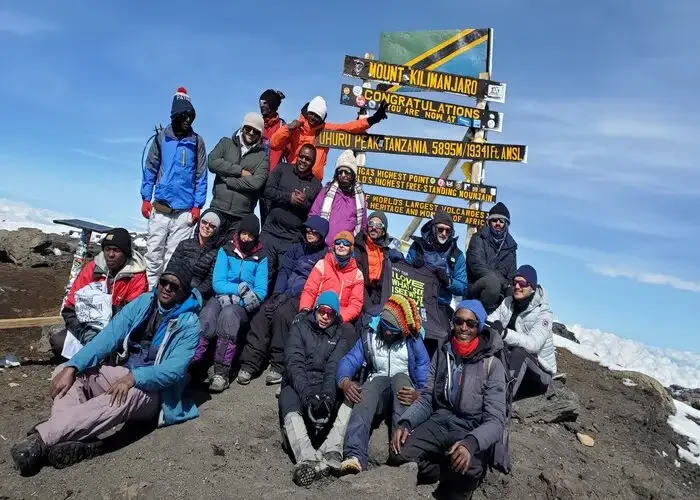
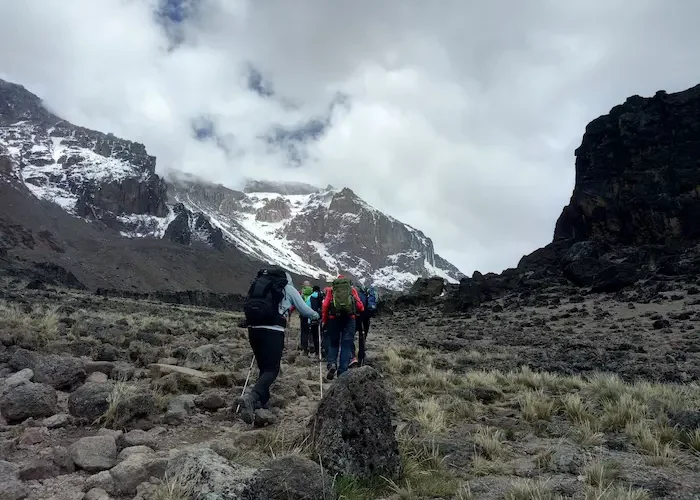
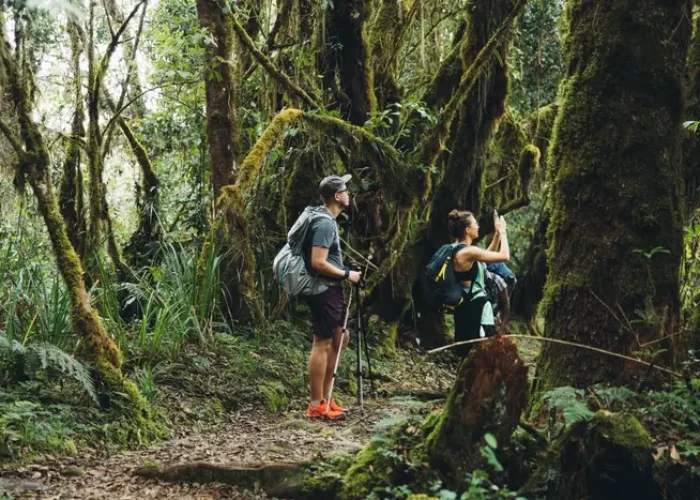
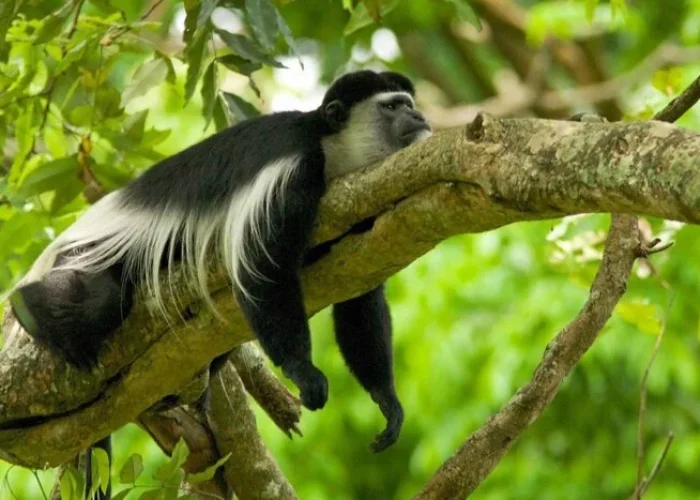
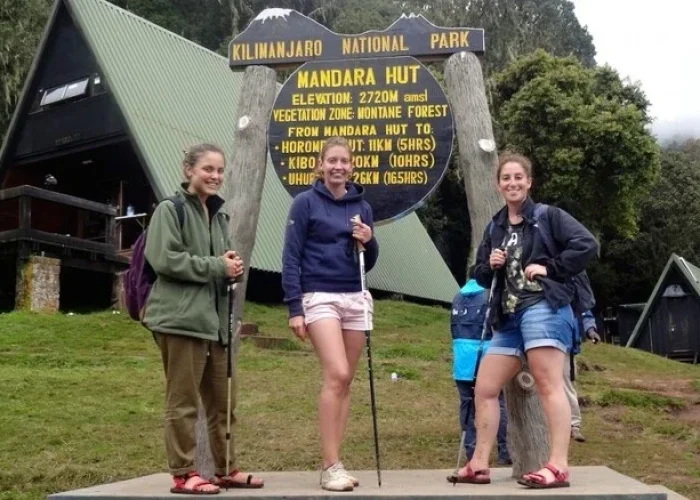
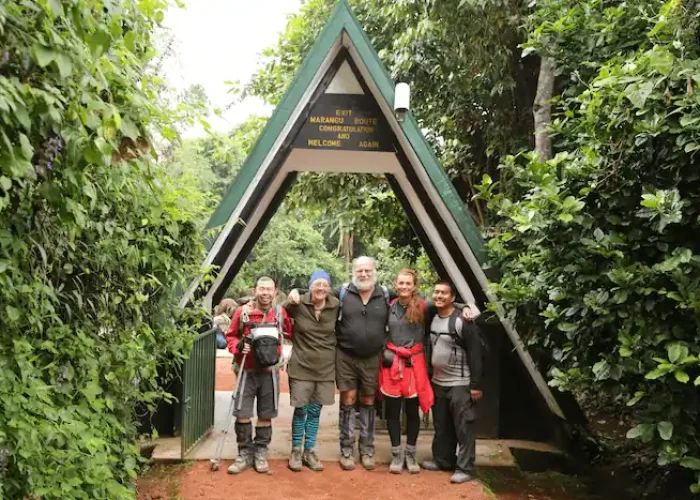
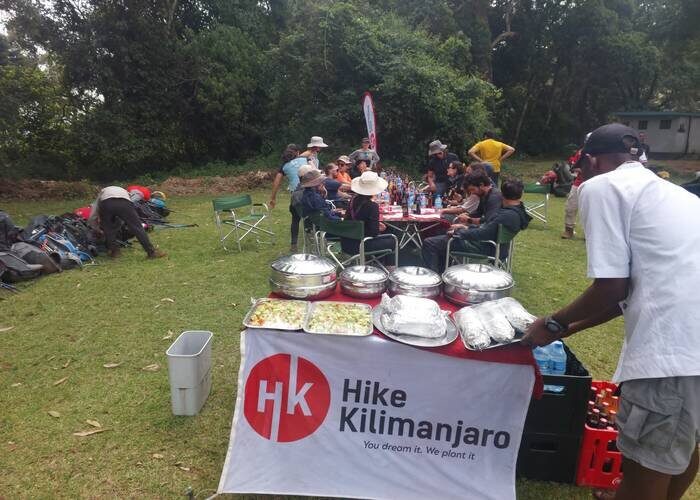
What makes this trip
different?
Hike Kilimanjaro
Company
- At Hike Kilimanjaro, we are committed to supporting the communities surrounding our trekking routes and wildlife safaris. We believe that tourism should be a force for good, and we actively give back to those who help make your adventure possible.
- A portion of our profits goes toward providing food, clothing, books, pens, and other essentials to orphaned children helping improve access to education and basic needs. By traveling with us, you directly contribute to creating a positive impact in local lives.
Sustainability and Responsible Tourism
- Of the few Travelife Certified companies in Tanzania, Hike Kilimanjaro is one. We respect the procedures for sustainable tourism. Our excursions are socially and environmentally conscious, leaving the lowest possible impact in the Tanzanians.
- 100% of Hike Kilimanjaro Company's staff members are natives of the regions where our trips are organized. It is one of our sustainable and responsible efforts to help local communities, support small businesses, and promote regional culture and way of life.
Related Information
Embarking on the 5-Day Budget Kilimanjaro Trek – Marangu Route offers an accessible and rewarding journey to Africa’s highest peak. As the only route featuring cozy mountain hut accommodations, Marangu is ideal for budget-conscious trekkers who prefer not to camp. Its well-trodden path and direct ascent make it one of the most beginner-friendly options on Kilimanjaro.
To ensure your climb is safe, successful, and enjoyable, it’s important to be well-informed and well-prepared. In this section, we share essential information, expert advice, and practical tips specifically tailored for the 5-day version of the Marangu Route. Whether it’s your first trek or part of a greater adventure, this guide will help you get ready for a memorable experience on Mount Kilimanjaro with Hike Kilimanjaro.
What is the 5-Day Budget Kilimanjaro Trek – Marangu Route?
The 5-Day Budget Kilimanjaro Trek – Marangu Route is an affordable climbing package that offers a guided ascent of Mount Kilimanjaro via the “Coca-Cola” route, including hut accommodation, meals, park fees, and experienced mountain crew.
Is the 5-day Marangu Route suitable for beginners?
Yes, the 5-day Marangu Route is ideal for beginners who prefer a shorter trek with hut accommodations instead of camping, making it less physically demanding compared to other routes.
What’s included in the 5-day Marangu Route budget trek?
This package includes park permits, meals, accommodation in mountain huts, guides, porters, rescue fees, and ground transport to and from Moshi or Arusha.
What makes the Marangu Route more affordable than other Kilimanjaro routes?
The Marangu Route uses permanent hut accommodation, reducing camping logistics and costs making it a great option for those seeking a lower-budget Kilimanjaro trek.
How difficult is the 5-day Kilimanjaro Marangu Route?
The Marangu Route is considered moderate in difficulty, but the 5-day version has a shorter acclimatization period, which requires good fitness and stamina.
Is it possible to summit Kilimanjaro in 5 days via the Marangu Route?
Yes, it is possible, though the shorter duration can affect acclimatization. Many trekkers still succeed with proper preparation and experienced guides.
What kind of accommodation is provided on the 5-Day Budget Kilimanjaro Trek – Marangu Route?
You’ll stay in shared mountain huts equipped with bunk beds and basic facilities ideal for climbers who prefer not to sleep in tents.
What should I pack for the 5-day Marangu Route trek?
You should pack warm layers, hiking boots, a sleeping bag rated to -10°C, a headlamp, and trekking poles. See our full packing list guide for complete details.
When is the best time to do the 5-day Marangu Route trek?
The best months are January to March and June to October for stable weather and clear summit views.
How many people are in a group on the budget Marangu Route trek?
Group sizes vary but typically range from 6 to 12 trekkers, allowing for cost-sharing and a more social experience.
Are meals included in the 5-Day Budget Kilimanjaro Trek – Marangu Route?
Yes, nutritious hot meals are served three times a day and prepared by our trekking chef, ensuring energy and hydration during the climb.
What altitude is reached on the 5-day Marangu Route?
You will reach Uhuru Peak at 5,895 meters (19,341 feet), the highest point in Africa.
How do I book the 5-Day Budget Kilimanjaro Trek – Marangu Route?
Booking is easy just visit our website, select your dates, and pay a deposit to reserve your spot. Flexible rescheduling options are available.
How much does the 5-Day Budget Kilimanjaro Trek – Marangu Route cost?
The cost of this budget-friendly Kilimanjaro package varies by season and group size, but it is designed to be one of the most affordable options for trekking Kilimanjaro.
5-Day Budget Kilimanjaro Trek - Cost for 2025 and 2026
Hike Kilimanjaro introduces the standard 5-day Budget Kilimanjaro trek – Marangu route at USD 1,500 to 2,300 per person.
The following table outlines the cost of 5-Day Budget Kilimanjaro Trek – Marangu Route for 2025 and 2026, based on different group sizes.
Number of Pax
Price Per Person
2
USD 1,880 pp
3 to 6
USD 1,729 pp
7 to 10
USD 1,695 pp
10+
USD 1,550 pp
For groups of 11 or more, kindly reach out to us via WhatsApp for special discounts and an additional complimentary trip for the lead traveler.
What are the risks of altitude sickness on the 5-day Marangu Route?
Due to limited acclimatization time, there is a higher risk, but our guides monitor symptoms closely and carry equipment for altitude emergencies.
Is a visa required for the 5-Day Budget Kilimanjaro Trek – Marangu Route?
Yes, travelers to Tanzania need a visa. You can obtain one upon arrival or apply online before your trip.
Can I combine the 5-day Marangu trek with a Tanzania safari?
Absolutely. Many trekkers choose to extend their adventure with a Northern Tanzania safari to Serengeti or Ngorongoro after the climb.
What is the success rate for the 5-day Marangu Route?
Success rates are slightly lower than longer treks due to faster ascent, but fit and well-prepared climbers often succeed.
How do I train for the Kilimanjaro Trek – Marangu Route?
Cardio training, day hikes with a backpack, and altitude conditioning can greatly improve your chances of reaching the summit.
Why Book with Hike Kilimanjaro?
Hike Kilimanjaro is a locally owned and internationally trusted company known for:
- Certified, experienced mountain guides
- Exceptional safety records and client care
- Ethical treatment of porters (TPA member)
- Transparent pricing with no hidden costs
- Customized itineraries and private departures
We go beyond trekking – we support local communities, promote conservation, and deliver life-changing journeys. You’re not just booking a trek; you’re joining a movement.
Similar Kilimanjaro Treks
USD 1,550 / person
Speak to an Expert

Maxon

- WhatsApp +255 692 406 444
